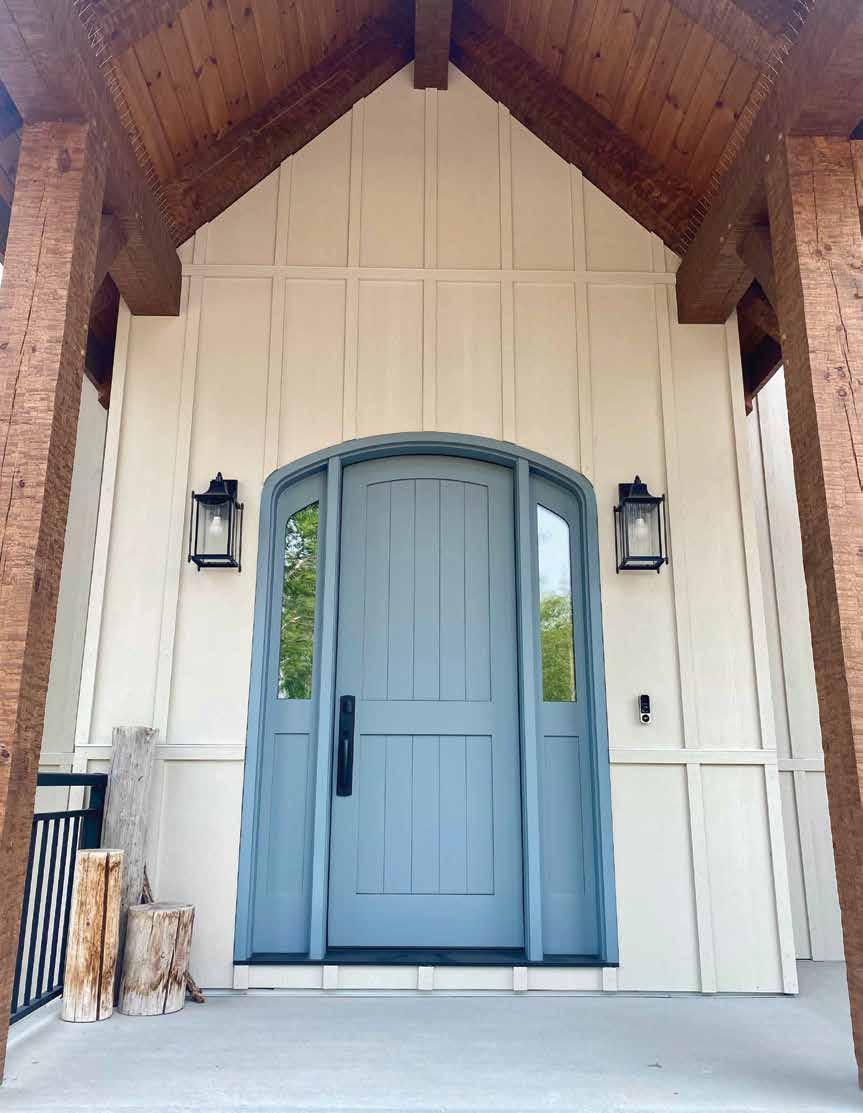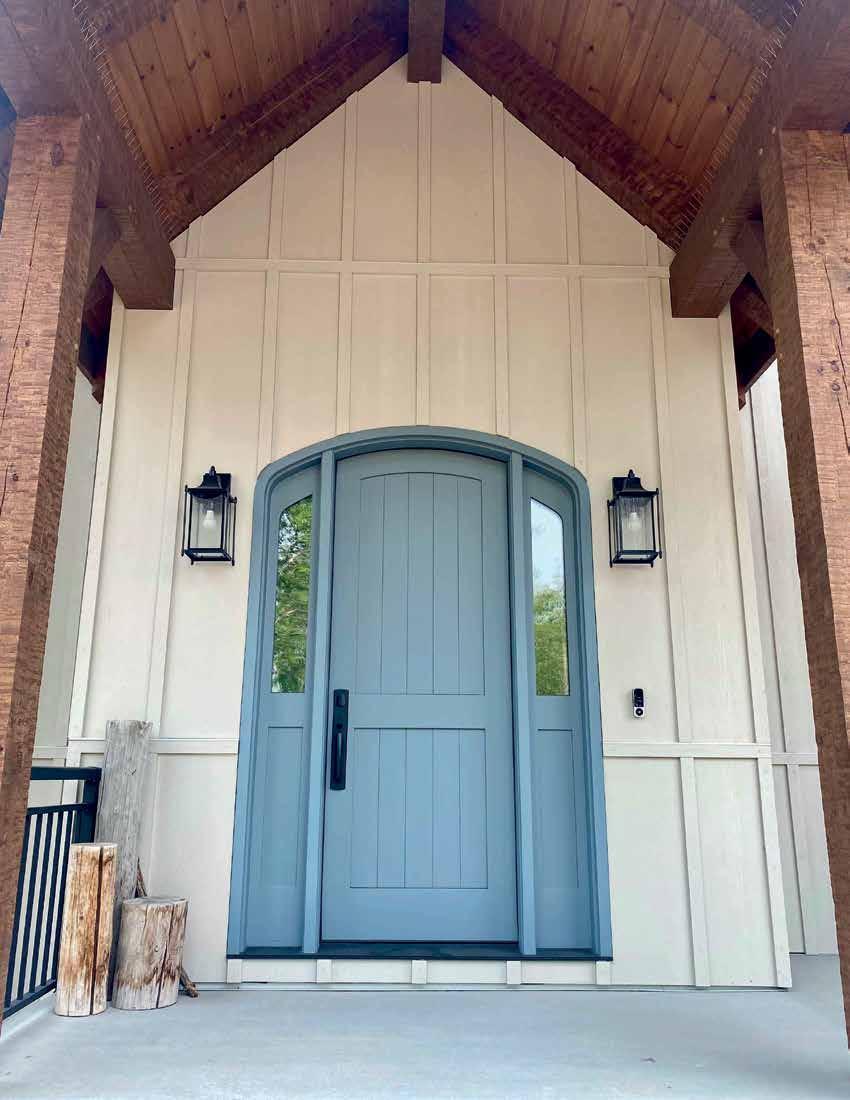THE PARKES TEAM



Our REALTORS® not only specialize in b uying and selling luxury homes, we also assist with tax appeals, can refer you to the best contractors, and moving companies Winnipeg has to offer, as well as guide you with any design decisions you may need to maximize your space and real estate return. Are you looking for the perfect home? We’re here to help you every step of the way.




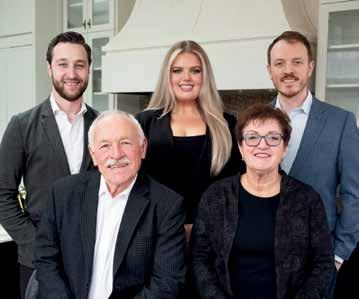
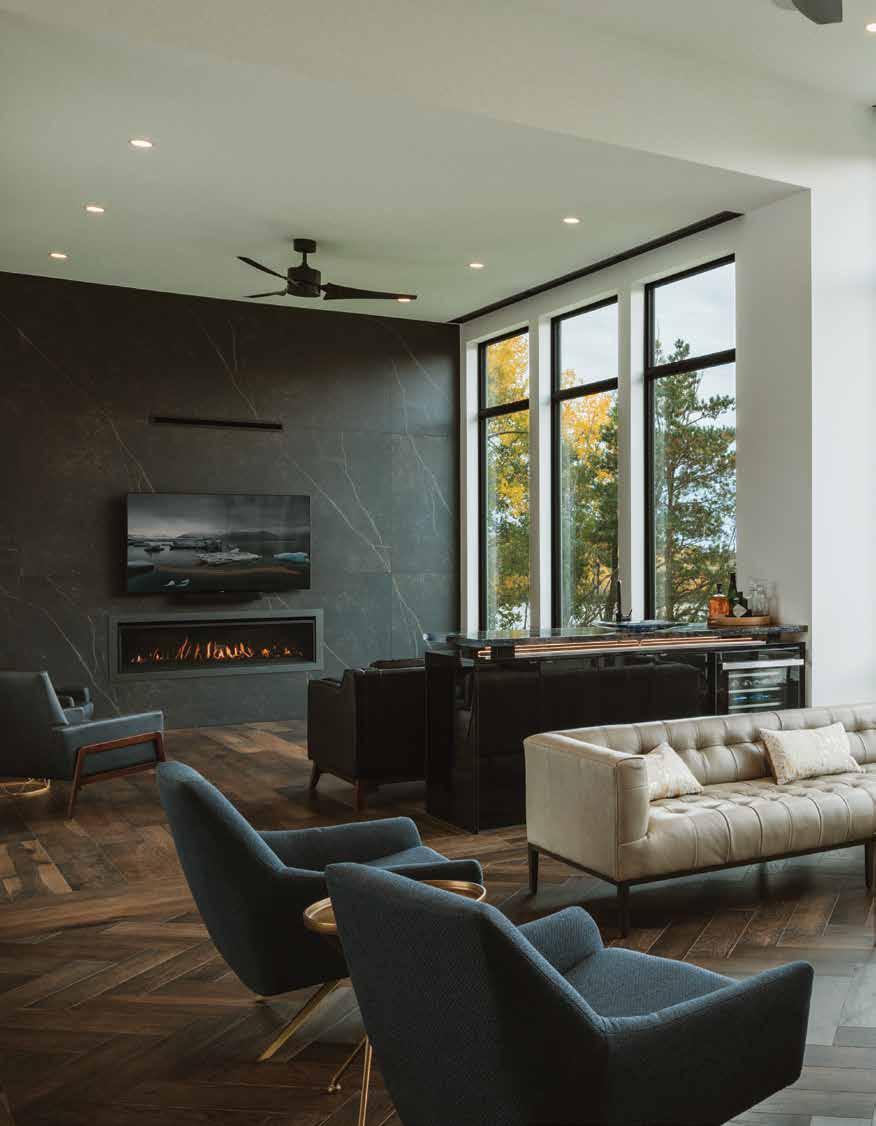


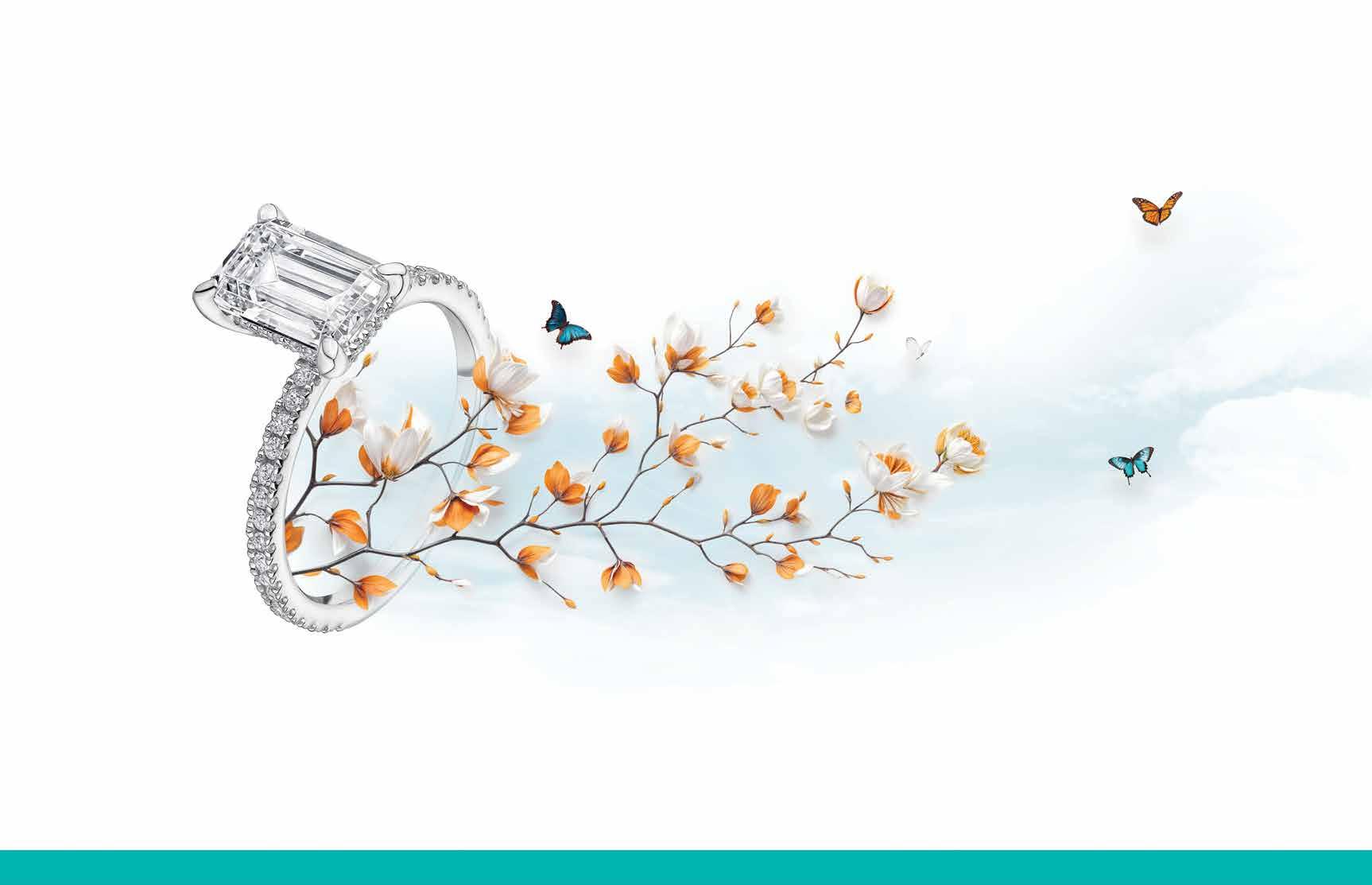



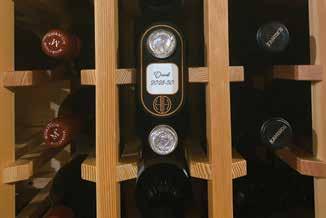
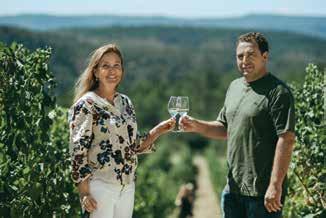
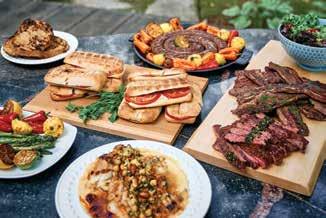
17 Jones & Company Celebrates 25 Years!
A scrapbook of memories from the last 25 years.
32 Best Bets Under $25
Fight inflation with our Best Bets wall of wines.
44 How to Build a Wine Collection
Ricki-Lee Podolecki walks you through starting your wine collection.
52 Five Questions for Neasa Corish-Miquel
Gary Hewitt speaks to a winery owner who has been with JoCo from the start.
56 The Global Language of Barbeque
We gather ’round the grill for recipes from South Africa, Argentina, and Australia.
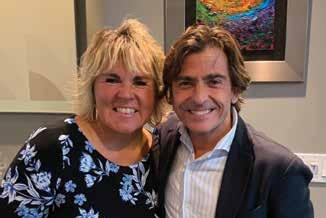
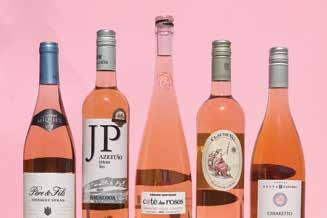
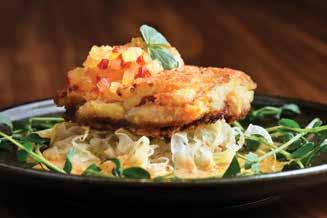
Giselle


Relationship
This summer sangria recipe uses our Grapefruit White Balsamic Vinegar for an extra splash of flavour!
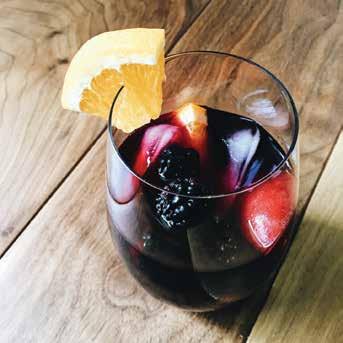
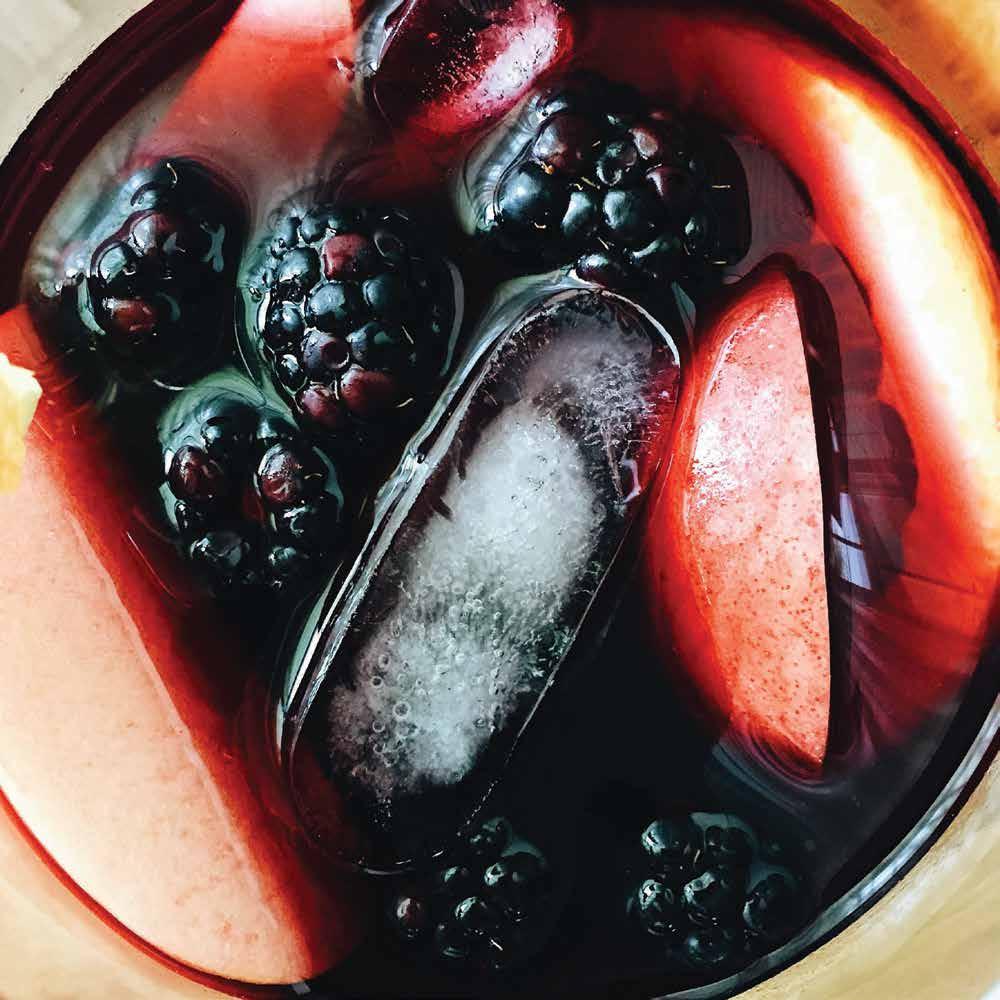
929 Corydon Ave. 204-505-1455
1604 St Mary's Rd. 204-615-3885 1530 Regent Ave. 204-504-4200

@thecellardoormag
Publisher and Editor Lisa Muirhead lisa@poisepublications.com
Editorial Board
Tina Jones, Sylvia Jansen, Gary Hewitt, Jill Kwiatkoski, Mike Muirhead, Manon Paquin, Ricki-Lee Podolecki
Graphic Design Garfield Street Media info@garfieldstreet.ca
Contributors
Todd Antonation, Andrée-Anne Boisvert, Sandy Brodine, Annick Carstens, Fred Carstens, Carol Fletcher, Jen Goreski, Gary Hewitt, Sylvia Jansen, Tina Jones, Paul Martens, Shirley Martens, Megan Kozminski/Media Spur Inc., Jill Kwiatkoski, Deborah KuhlMagnusson, Guy Magnusson, André Mahe, Carol Mahe, Ian McCausland, Saralyn Mehta, Mike Muirhead, Manon Paquin, Tom Penner/Firefly Communications Experts, Ricki-Lee Podolecki, Malcolm Roberts, Steve Salinkowski, Jon Thiessen, Rick Watkins
Published for Jones & Company Wine Merchants by Poise Publications Inc www.poisepublications.com
For advertising information, email lisa@poisepublications or visit poisepublications.com/the-cellar-door.
In 1999, Tina Jones had the vision of opening Banville & Jones Wine Co., a fine wine boutique in Winnipeg, Manitoba that specializes in promoting wine education and lifestyle. In 2020, we changed our name to Jones & Company to reflect our team and focus on shopping local, globally.
1616 St Mary’s Rd. Winnipeg, MB R2M 3W7 204-948-9463
JonesWines.com | @joneswinemerchants © 2024 Poise Publications Inc.

Quality sod, soil, decorative landscape stones to be bagged and picked up or delivered to your door.
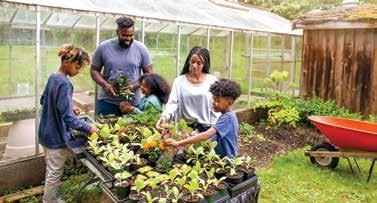

In this issue, Mike Muirhead takes over Tina’s Message to reflect on her leadership over the last 25 years.
Twenty-five years in any industry is an amazing feat. Our success is rooted in a team of dedicated wine nerds and professionals who care about this place, what we stand for, and the relationships we have built on all sides of the business. However, none of this would be possible without the vision and dedication of our founder and President, Tina Jones.
Like a handful of my colleagues, I have worked with Tina for much of this history. Tina is well known publicly as an accomplished businessperson, entrepreneur, and philanthropist. From inside our team, we see the substance, determination, and great soul that have driven Tina to achieve so much.
Tina’s business acumen and trail-blazing are clear. She is still involved in the everyday business of Jones & Company. Using wine as her medium, she thrives in finding new ways to connect people and ideas. These connections have led her down many other business paths, including RINK Training Centre, Green Carrot Juice Co., Wine & Drinks College Manitoba, and this magazine, The Cellar Door
Tina is also a person of great substance and soul. She is both a leader and supporter of people, our city, and our province. Jones & Company has contributed over $5 million in donations over our 25 years to many charities close to her heart—with health care and women in business being the largest benefactors. In fact, Tina has mentored dozens of women entrepreneurs and continues to believe that the strongest way to help is with time and guidance—and a healthy dose of pushing the envelope.
Among her greatest gifts to Manitoba and Canada is her ability to put her business skills and her big heart together to make a big difference in our community. As regulars of the store know, she is not in the store as much as she was the first 15 years of building our company. This is mainly because she has been lending her time and passion to raising funds for the HSC Foundation. In the almost 10 years she has spent as Chairperson, the Foundation has attributed over $150 million to her fundraising. Not long ago, I asked Tina for help

editing a wine menu, which she did without hesitation. While she was reviewing it, I asked what else she was doing that day. She told me she had just secured $1 million for the HSC Foundation. For her, both the small and large projects had her name on them, so they were equally important.
It is hard to overstate Tina’s presence in the store—whether she is there on a daily basis or not. Her business philosophy shapes how we form relationships with customers, turning them into friends. Her voice is behind every bottle of wine, which has the chance to tell its story and connect the people and the land behind each one with our Manitoba wine community. Her signature is on everything Jones & Company.
Coming into our 25th year, we have many events and celebrations planned. Keep an eye on social media and make sure you visit us in the store for more of what we have come to be known for: international wine guests, tastings, education, and so much more. We hope you can join us in person to raise a glass to our next 25 years!
Cheers!
 Mike Muirhead Vice-President, Jones & Company Wine Merchants
Mike Muirhead Vice-President, Jones & Company Wine Merchants

Gallagher brings global insurance expertise combined with local knowledge and industry-specific capabilities to help our clients thrive. We offer innovation and service excellence in more than 150 countries, and use our 95+ years of experience and insight to protect businesses and people.
Our team of experts can help you face the future with confidence and assist you with:
• Commercial insurance solutions
We cater to your business size and unique needs, and we have experts for small business and multinational companies.
• Benefits and HR consulting
We craft a tailored plan, strategically investing in your people’s health, talent, financial wellbeing and growth.
• Personalized protection
Whether you’re looking for insurance for your car, home or family, we can help.
Connect with us to discuss your professional or personal insurance needs today.







Celebrates 25 Years!
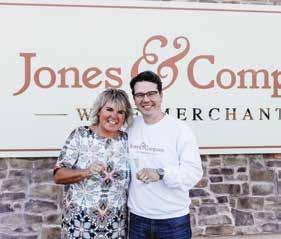
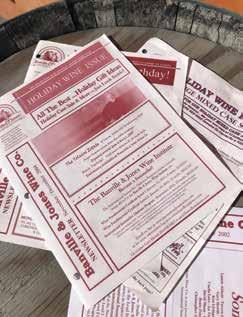

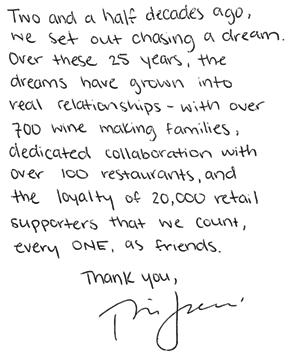
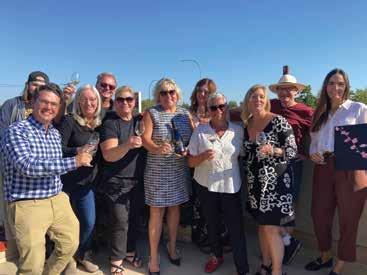

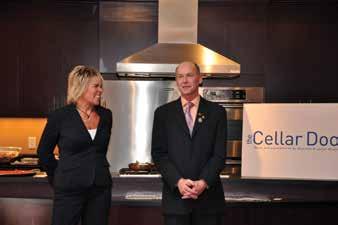
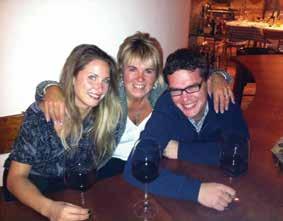
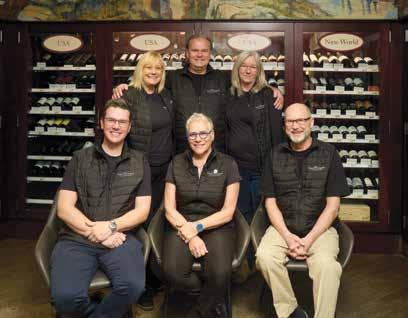

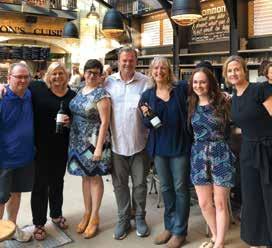
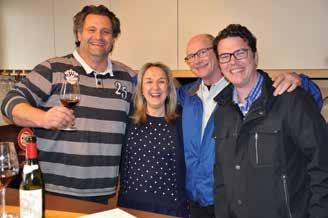
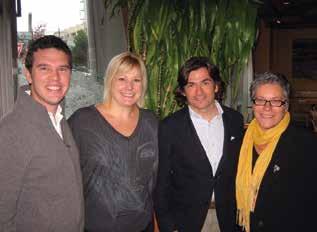


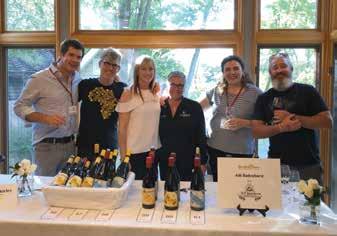



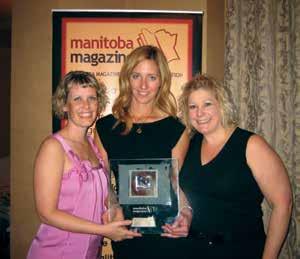
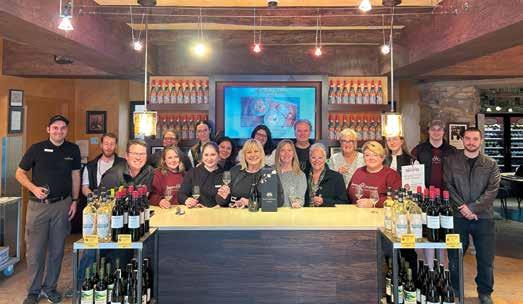
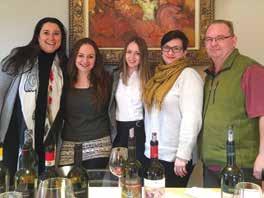
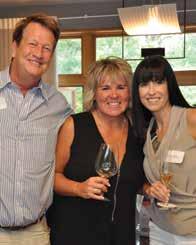
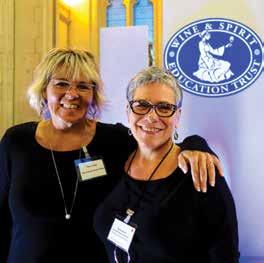



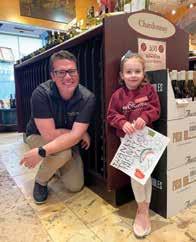
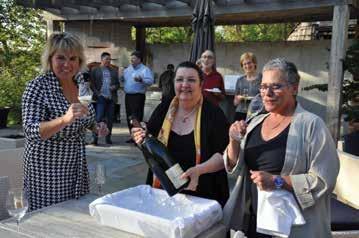


Six years ago, in July 2018, Body Measure emerged onto the health and wellness scene, marking a significant milestone in its journey. However, the genesis of this innovative venture traces back to a casual lunch-hour conversation, as recounted by co-owner Melina Elliott. Over a meal shared with her partner in health, Erica Henderson, Melina reminisces, “We were using a DEXA scanner for a study at the University of Manitoba, and she said, ‘Wouldn’t it be great to use all this great info to help people live healthier lives?’”
With that simple yet profound question, the seeds of Body Measure were sown. Elliott describes the moment as a figurative light bulb illuminated above their heads, signifying the beginning of an extraordinary venture. “We started planning the very next day,” she recalls, emphasizing their shared belief in the potential to positively impact lives.

Research conducted by Henderson revealed a glaring gap in the Canadian market, particularly in Winnipeg, where nothing like Body Measure existed. Sensing an opportunity to fill this void and make a meaningful difference, Elliott and Henderson swiftly embarked on their entrepreneurial journey. Securing financing proved to be a challenge initially, with banks expressing skepticism about their unconventional business concept. Undeterred, they persisted, taking calculated risks, and investing their own resources to bring their vision to life.
Establishing themselves at 1086 St. Mary’s Road was just the beginning. Elliott and Henderson embarked on an extensive outreach campaign, tirelessly spreading the word about their ground-breaking service. “We hustled to tell people why a 10-minute scan could change their lives,” Elliott recounts. Henderson’s efforts included personally visiting every gym in the city, offering free DEXA scans to trainers and owners. Through a combination of grassroots marketing efforts and traditional advertising channels, Body Measure began to gain traction.
Their dedication bore fruit from day one, with an influx of clients seeking the transformative potential of a DEXA scan. “Essentially, we were busy from day one,” Henderson reflects, highlighting the validation of their endeavour. As word spread and clientele grew, Body Measure evolved into a thriving enterprise guided by a team of passionate professionals dedicated to empowering clients on their health journeys.
Over the years, Body Measure has expanded its range of services, doubling its space in January 2022 to accommodate new offerings. In addition to the original DEXA scanner, the facility now boasts an array of cutting-edge technologies aimed at enhancing health and well-being. From Emsculpt Neo for strength and toning to Emsella for pelvic health, each innovation is rooted in the principle of non-invasiveness, harnessing the body’s natural mechanisms for improvement.

As time went on, Henderson and Elliott began to see that it is crucial to recognize the broader context of health and well-being, including the intricate role hormones and nutrition play in our bodies. It was with that realization that the duo brought on two new professionals: Nurse Practitioner Annabelle Reimer and Registered Dietitian Angela Martens.
NP Reimer specializes in hormonal balance and weight loss for both women and men. In addition to comprehensive physicals, blood work, and hormone testing, Annabelle will analyze your body composition results and leverage them for optimal health and weight management. The team is especially excited that Annabelle brings a specialty in menopausal and perimenopausal care. She has comprehensive training in bio-identical hormone replacement therapy that enables her to offer nuanced and personalized care to help women navigate and balance the expansive changes that come with this phase in their health care.
Angela Martens is a Registered Dietitian who focuses on weight loss and the management of chronic health conditions, such as Type 2 diabetes. With the new additions to the Body Measure team, they can now delve deeper into the root causes of symptoms rather than merely
cells.
addressing the surface issues. This is done with their Comprehensive Health Assessment.
Reflecting on their journey, Elliott and Henderson express gratitude for the opportunity to impact lives positively.
“We’re excited to meet people every day and help them transform their lives with our state-of-the-art diagnostic technologies and our dedicated team of practitioners,” Elliott remarks. Henderson echoes this sentiment, emphasizing the joy derived from helping others achieve their health goals.
In the end, Body Measure stands as a testament to the power of determination, innovation, and a shared vision for a healthier future. As Elliott concludes,
“We’re so happy that we took the chance to start a new, ground-breaking business that’s changed the lives of so many people for the better.”
In essence, our health is our most valuable asset. By prioritizing holistic approaches that address both internal and external aspects of health, we can unlock our fullest potential for vitality and well-being.

For our 25th anniversary, we asked our longest-serving staff and long-time customers to recommend their favourite wines of the last two decades.
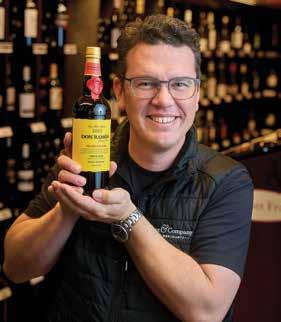


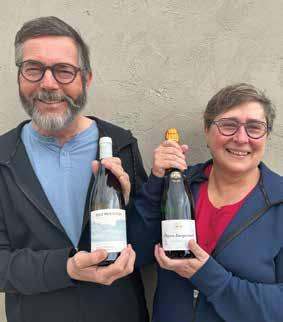
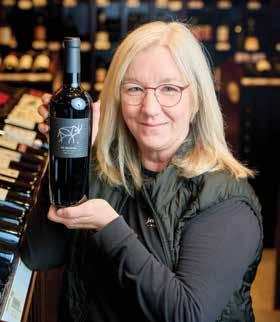
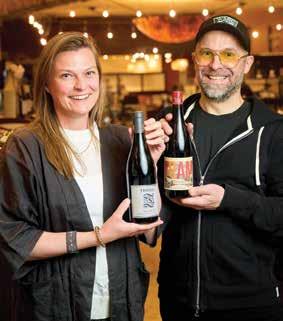

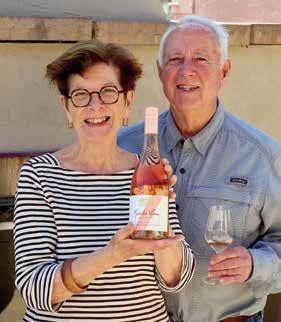


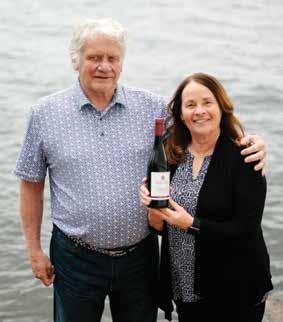
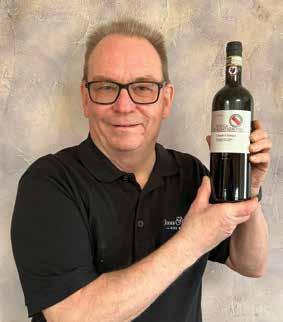
From a quiet start in a mall storefront on Meadowood Drive, Jones & Company Wine Merchants has grown into Manitoba’s largest private wine store, restaurant supplier, wine school, and publisher of an award-winning magazine. Tina Jones has led this path, believing that “success is built carefully, with real vision, great people, good relationships, and a lot of hard work.” We asked about the path from there to here.
In the 1990s, the wine scene in Winnipeg was starting to look outside of its historically narrow offerings. Early private stores had made some headway in bringing in some new and interesting wine producers. With a vision to enrich and educate our wine community, the store (then Banville & Jones) opened its doors with a few hundred different wines, including new arrivals to Manitoba. “The numbers tell a story,” says Tina Jones.
“Thirty years ago, before private wine stores opened in Manitoba, the Liquor Board stores carried fewer than 500 different kinds of wine. Today, our store carries more than 1,300.”
Working with Gary Hewitt (the store’s first and long-time senior buyer), Tina recognized that the wine industry worldwide was varied and rich—but also fractured. Thousands of small wine farmers were producing interesting wines and were open to international markets, but few were making an impact in Canada, let alone Winnipeg.
Brand and wine label recognition has always been an important factor for consumers in Manitoba, which means that bigger companies have had the advantage: most small producers still cannot afford the marketing


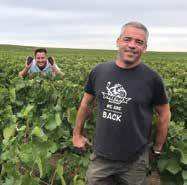

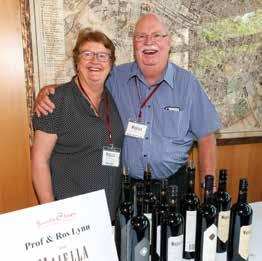
budgets of big brands. Added to that were provincial liquor buying programs that disadvantaged small operations.
“When the Liquor Board goals are to ensure stock in almost every liquor store, the result is big wineries that guarantee big supply,” Tina says. “Our philosophy has been to find great wines from small farmers and families that offer a few hundred, or sometimes only a few cases.”
“From the start, I wanted to enrich our wine community with wines that no one else knew,” says Tina. “It has always been about supporting the underdog because that’s where the excitement is!” Finding smaller suppliers is not easy, however. Many do not attend large wine shows and do not have funds to hire agents. “We needed to do a lot of our own research and travel, arranging personal meetings with winemakers and families—and then it took courage and a belief in our instincts to place our orders,” Tina recalls. Offering unknown wines was a risk, but the goal has always been to do just that. “My first rule was ‘No Lazy Buying.’ In fact, that’s still our rule—and we are far from lazy!”
Searching out top small producers in the world is the essence of our philosophy: shop local, globally. “It is about supporting the underdog and shining a spotlight on hidden treasures,” Tina explains. Our friendships with small producers give our customers new great wines


to love, and they also open doors to new relationships: “Inevitably, a winemaker will introduce us to their winemaking friends and to other small producers making exciting wines,” says Tina. “From these introductions come more great relationships, bringing new gems into our store. It is not an exaggeration to say that the Jones & Company wine selection in Winnipeg is among the best of any wine shop in North America. And that’s not by accident.”
Tina’s vision and hard work have become a celebration of the unfamiliar, the new, and the unknown. The world’s great wine regions and wine styles are broadly represented, and the extensive collection evolves to provide interest for the curious. “Our wines tells the story of the personalities and families behind it, and both our magazine and staff are key players in bringing all this to our customers,” says Tina. “Our staff are hired for their love of wine and an infectious enthusiasm for the fun inherent in this industry. The combination of great wine and great people brings only good things for our restaurant partners, our customers, and our wine students.”
Where next? In Tina’s view, the possibilities are limitless. “And we are always finding new excitement around the next wine corner!”
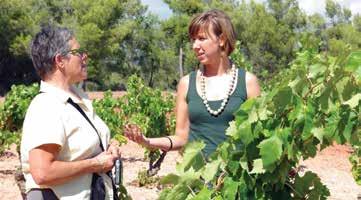
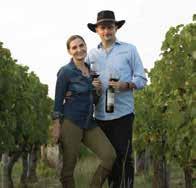

Name:
Phone Number:

Want to win a $100 gift certificate for Jones & Company Wine Merchants?
Simply complete our quiz by circling the answers and dropping the page off at the store (don’t forget to include your name and phone number) OR scan the QR code to take the quiz and enter online! Winners will be chosen by a lottery of those who answer all 10 questions correctly.
1. On what street was the original store located?
A. Main Street
B. Dakota
C. Meadowood
D. St. Anne’s Rd.
2. What year did the store move to 1616 St. Mary’s Rd (its current location)?
A. 2005
B. 2000
C. 2010
D. 1999
3. What colour was the current building when it first opened?
A. Beige
B. Orange
C. White
D. Brown
4. Which staff member has been with Jones & Co. the longest?
A. Mike
B. Sylvia
C. Rick
D. Gary
5. How many different wines are available at Jones & Company?
(Hint: The answer is on Cornervine!)
A. 2,500
B. 525
C. 1,350
D. All the good ones
6. Which wine have we carried for 25 years?
A. Ployez-Jacquemart Champagne
B. Majella The Musician
C. Don Ramón
D. Gimli Goose
7. How many Holiday Gift baskets and bags do we create each year?
(Fact: Our first year, we made 60!)
A. 200
B. 1,200
C. 2,000
D. I’ll take 20, please
8. What country has the largest selection of wine in the store?
A. United States
B. Italy
C. Australia
D. Chile
9. Where can you find our selection of fine wines in the store?
A. The Cage
B. The Cellar
C. The Cave
D. Jill’s office
10. What is the official name of the event room upstairs at Jones & Co.?
A. The Promenade Deck
B. The Tuscan Room
C. The Cellar Door
D. The Meeting Room






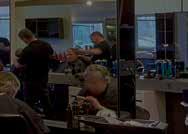




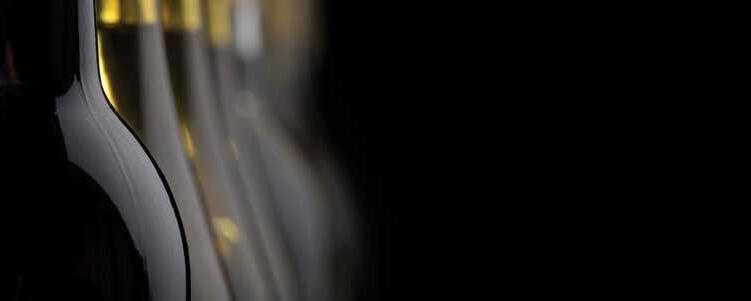
Well, hello, summer! The warm sun on your face feels almost as good as that cool glass of rosé in your hand. Let me take you on a journey to explore some brand new rosés—and some classics—on the Jones & Co. rosé wall.
At Jones & Co., we are diligent about selecting our rosés. Summers in Manitoba are short, and we start planning for the Spring/Summer rosé season about 6–7 months prior! Every October, the buying team sits down for the annual staff Rosé Forum to plan for the rosé season. The

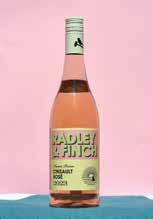

tasting forum varies from year to year, but on average, we taste between 50 and 100 different rosés—and fewer than half make the final cut. We bring in the freshest vintages, the best quality, and—of course—the best-priced rosés that we can find. We seek out small wineries and independent farmers from all over the world, looking for variety and uniqueness. We are always searching for the next Jones & Co. classic. Ultimately, our goal is to bring you unparalleled rosés to sip throughout this summer and beyond!
Medrano Irazu 2023 Choza Rosado Rioja, Spain ($17.99)
This beautiful “rosé” is a blend of 80% Garnacha and 20% Viura. This wine is born when a white grape (Viura) is co-fermented with a red grape (Garnacha) and made in the style of a traditional red wine, wine skins and all. Technically, it is neither a red, nor a white, nor a rosé—it’s “clarete.” Complicated, I know. To simplify, we (and the winery) classify this as a rosado (Spanish for rosé). This beauty has notes of red plums, a touch of McIntosh apple, and a hint of citrus (from the Virua) and orange blossom. It is divine on its own or paired with summery main dishes like grilled fish, chicken, or pork; pasta salad with grilled vegetables; or a seafood boil.
Radley & Finch 2023 Summer Sessions Cinsault Rosé Western Cape, South Africa ($24.99)
This wonderfully light and fresh rosé will perk up your palate and have you saying, “Well, isn’t this just summer in a glass!” The dynamo duo of Thinus Kruger and Pascal Schildt focuses on unpretentious wine: “We simply want to make good wines for good people. We are two guys doing what we do best to ensure that you have the chance to match many good times with fabulous vino.” On top of making great wines, their grapes are sourced from sustainable vineyards, produced in small batches, and sold to niche markets around the world. This rosé spends only 1–2 hours in contact with the Cinsault grape skins—hence, its extremely light pink colour. Enjoy super chilled on its own, or pair it with delicious summer BBQ like burgers, salads, grilled corn, and chicken kebabs.
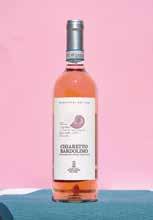

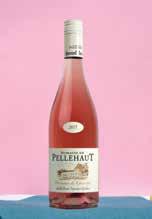
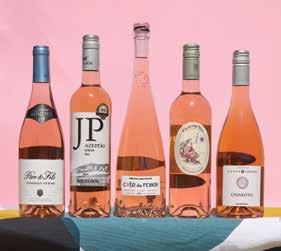
Castelnuovo del Garda 2023 Chiaretto Bardolino, Italy ($16.99)
Italy’s most famous and popular rosé style—chiaretto (key-are-et-toh)—is made only in Bardolino, (east of Lake Garda), using a variety of Consorzio-approved grape varieties. The three most important grape varieties in chiaretto—Corvina, Rondinella, and Molinara—also make Valpolicella and Amarone. Chiaretto is made from red grape varieties—but it uses white wine-making practices: the grapes are picked and pressed, and there is no maceration to extract the pigment from the grape skins. This process gives it its characteristic chiaro (“pale”) colour. This chiaretto from Castelnuovo del Garda has hints of salinity, light tannins, notes of cherry, orange blossom, and citrus zest. It is the perfect wine to share over a charcuterie board while you watch the sunset on the lake.
V.F. (Very Friendly) Wines 2023 Syrah/Pinot Noir Rosé South Australia, Australia ($24.99)
A catchy slogan for a wonderful wine. The Hello! team produces wines that are not just vegan friendly—they are “friendly” full-stop! No pomp or attitude here, just a very approachable wine. A blend of Syrah and Pinot Noir gives this rosé beautiful notes of strawberries and cream and slight hints of violet, grapefruit, and orange blossom. Pair this rosé with a cheese board, light seafood dishes, or that juicy beercan chicken on the BBQ! Simply divine!

Domaine de Pellehaut 2023 Harmonie Rosé Côtes de Gascogne, France ($17.99)
Harmonie Rosé got all the votes at the annual rosé forum in October! This beautiful blend of Tannat, Merlot, Cabernet Sauvignon, Malbec, and Syrah is made in the saignée method (French for “bleeding”) to create an elegant, almost full-bodied, and delicious rosé. This method involves “bleeding off” or siphoning off a red wine that is in its early production before much colour is extracted. The pink juice continues to ferment as a white wine would, creating a more full-bodied, rich, and intense style of rosé. This knock-out has notes of blackberry and raspberry and hints of peach and red flowers. Enjoy this rosé with hearty grilled red meats or vegetables, such as eggplant and mushrooms.
A number of rosés have been on the Jones & Co. favourites list for multiple years—and some for over a decade! We have fallen so in love with these wines that we could not picture our summers without them. They are not just our pretty-in-pink friends—you, our customers, have fallen in love with them too! So don’t fret. While we continue to bring in new and surprising rosés each summer, we will keep these classic rosés on our shelves for many summers to come.
Classic Best Bets:
* Laurent Miquel Père et Fils Cinsault/Syrah Rosé Pays d’Oc, France ($19.99)
* Bacalhôa JP Azeitao Syrah Rosé Península de Setúbal, Portugal ($17.99)
* Gérard Bertrand Côte des Roses Grenache/Cinsault/Syrah Rosé Languedoc, France ($24.99)
Paul Mas Claude Val Rosé Languedoc-Rousillon, France ($16.99)
Selva Capuzza San Donino Garda Classico Chiaretto Lombardy, Italy ($27.99)
*Celebrating over 10 years on our shelves!

A little over 25 years ago, I sat in a private office replete with a grass-green carpet and a golf cup in the middle. I was not there to practice putting but to meet Tina Jones for the first time. I had been recommended as someone who knew something about wine, and Tina’s new, soon-to-open private wine store needed a specialist. At the time, I thought that I knew something about wine (little did I know!), and I was brash enough to suggest that if I did a good job, I would not be needed in two years’ time. I was lured by a vision of lounging in a corner reading wine magazines and chatting cordially with customers—an idyllic job.
With six months to store opening, we needed to select and order wines. It was a giddy time of new cable modems, facsimile transmissions (fax!), and, by today’s standards, patience. I fastidiously cherry-picked the best wines available from the Liquor Board. I studied the wine gospel, Wine Spectator, to know the best wines and trends. And then, we went on a buying trip to New York—“Yowza, the job includes travel!”
Our first trade shows were wonderful. We had no wines, and every encounter with a new supplier was alive with possibility. The New York show was a small trans-Atlantic version of Vinisud, an expo of wines from around the Mediterranean, especially from the south of France. We came home with a bunch of new, amazing wines that would immediately establish us as a destination wine store.
The night before opening the store on Meadowood, we were stocking the shelves and ran out of selections with a whole bunk still empty. “Let’s fill the bunk with great wines from all over the store and call it Best Bets,” someone suggested— which has now been a 25-year tradition. The next day, we opened. And a customer came in. And bought a bottle of wine from Best Bets. And we were ecstatic.
Initially, our small band of employees did everything from ordering wines, unloading trucks, and stocking shelves to helping customers, writing newsletters, making sales, and hosting events. Growth was rapid. Initially, we planned wine dinners and tastings—up to 2 each week. I thought this was too ambitious. Soon, we were doing up to four events per week! Local chefs were keen; the wine pairings were
amazing; and the value was great. Our wine bunks were built on wheels: almost daily, we moved the bunks to make room for events. The store didn’t feel like a store, it felt like a wine community centre.
Tina figured out early on that I was not management material—a keen observation. But she thought that I might have a talent for telling people about wine. We launched a bespoke wine course called the ABCs of Wine (ok, not a very original name), and students enrolled. I started on my path to many certifications and a couple of decades of teaching about wine. When we moved into the big orange store on St. Mary’s Road, we created a wine and drinks school complete with a classroom and office. Happily, our foray into wine education contributed in a huge way to the growth of a wellinformed wine community and culture in Winnipeg. Our graduates continue to impact the hospitality scene and wine trade in Winnipeg and beyond.
And there has been travel. I loved the travel. What could be better than having a reason to visit beautiful regions in France, Italy, Spain, Germany, South Africa, and Australia; to interact with locals who know the best places to eat; to taste great (and not so great) wines with their makers; to get lost—and found again—on back roads in the days before global GPS; to meet wonderful people and learn their stories; and to bring those stories home to share? Many of my digressions during wine classes draw on a legion of wine travel adventures. And I do have a tendency to digress.
There has been “real work” too: days filled with endless sales reviews, communication with suppliers and customers, issues with wine supply and quality, searches for new wines, and meetings, meetings, meetings. We hosted Customer Appreciation events, ran training sessions for restaurants, created wine lists, and created a wine magazine (you’re reading it!). Our small band of employees grew to meet the needs of a grander, more complex business and the simple ways of running a business 25 years ago are long passé.
Now, hundreds of students, many great colleagues, and an astonishing four Sommelier programs later, I am still encouraged to spout off about wine. It’s lovely. Perhaps now I might find that seat in a corner for cordial chats.
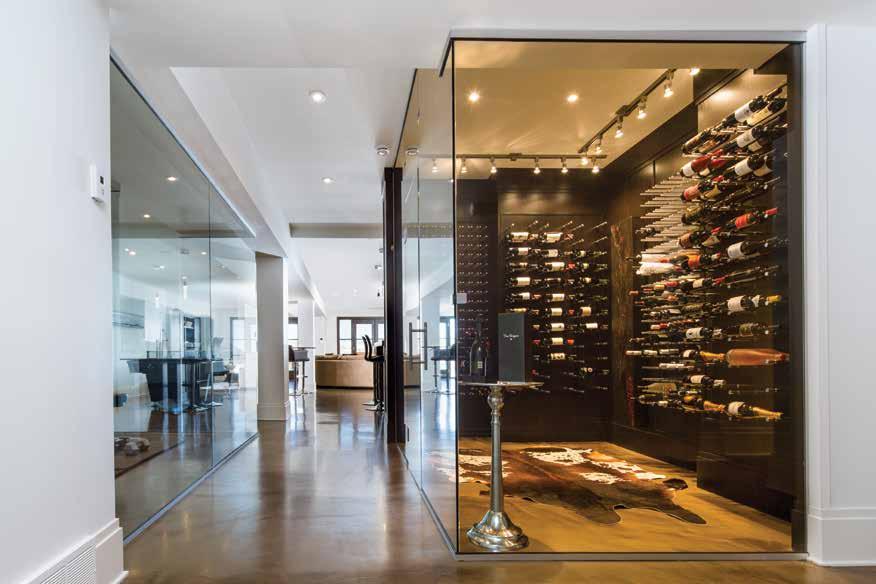

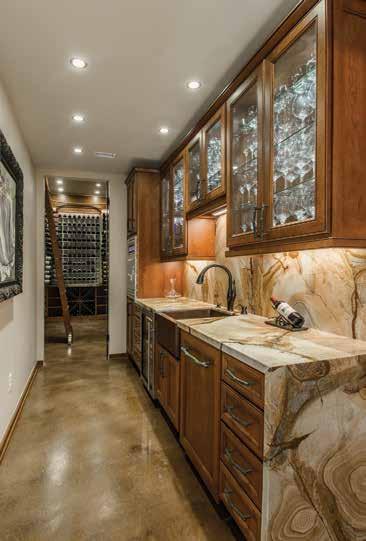
Our Best Bets wall has been guiding our customers since day one—pointing them to the highest-value wines for their dollar. Some of our favourite wines hold a perennial spot on this wall because they consistently punch above their price tag—but we also love to discover new finds to add to the wall.
Our Best Bets wall has become even more popular in the past year. Household staples have seen a spike, and wine has not escaped this trend. Shipping costs, federal excise tax and duty, high provincial taxes, the availability of supplies like glass for wine bottles, and many other factors have forced

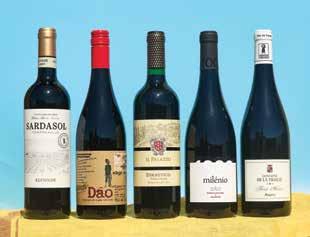
wine prices up. We are countering these challenges the best way we know how—by hunting for high-value wines for our customers’ dollars.
Like in many industries, there are also brand-name premiums for familiar or famous wines or grape varieties. For example, Cabernet Sauvignon has a reputation for being a bold, rich red, and wineries know it will sell on the region’s reputation. While everyone should occasionally splurge on their favourite luxuries like Cali Cabs, our Best Bets offer you great options and alternatives to pricey wines.
We have an incredible selection of BOLD REDS‚ including the Don Ramón blend, which has been on our Best Bets wall for over 20 years!
• Don Ramón 2020 Grenache/Tempranillo Campo de Borja, Spain ($16.99)
• Alconde 2022 Lerín Red Blend Navarra, Spain ($16.99)
• Finca Las Moras 2021 Reserva Tannat San Juan, Argentina ($17.99)
• Lubanzi 2021 Red Blend Western Cape, South Africa ($22.99)
• Santa Ema 2020 Select Terroir Reserva Carménère Colchagua Valley, Chile ($16.99)
• Station 22 2022 Boussac Languedoc, France ($17.99)
For LIGHTER TO MEDIUM-BODIED REDS, take home:
• Alconde 2021 Sardasol Joven Tempranillo Navarra, Spain ($14.99)
• Adega de Penalva 2020 Indigena Red Blend Dão, Portugal ($17.99)
• Il Palazzo 2021 Dinastico Sangiovese Tuscany, Italy ($17.99)
• Adega de Penalva 2020 Milénio Dão, Portugal ($21.99)
• Domaine de la Treille 2021 Cabernet Franc Anjou, France ($22.99)
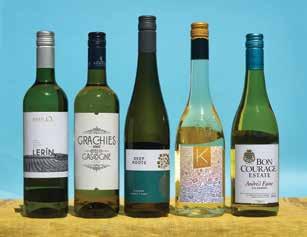
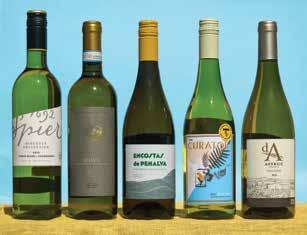
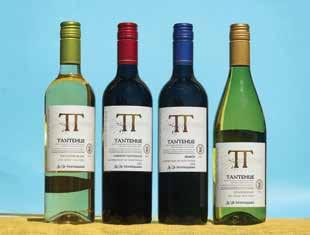
If you like AROMATIC WHITES with very expressive characteristics on both on the nose and the palate, try:
• Alconde 2022 Lerín White Blend Navarra, Spain ($16.99)
• Domaine de Grachies 2022 White Blend Côtes de Gascogne, France ($16.99)
• Deep Roots 2022 Rivaner Rheinhessen, Germany ($21.99)
• Kaltern 2021 K White Trentino-Alto Adige, Italy ($23.99)
• Bon Courage 2023 André’s Fame Colombard Western Cape, South Africa ($23.99)
Whites are great for summer food pairings and sipping with friends. Try these FOOD-FRIENDLY WHITES for something new:
• Spier 2022 Discover Collection Chenin Blanc/ Chardonnay Western Cape, South Africa ($15.99)
• Castel Nuovo del Garda 2022 Soave Veneto, Italy ($16.99)
• Adega de Penalva 2022 Encostas de Penalva White Blend Dão, Portugal ($16.99)
• A.A. Badenhorst 2021 The Curator White Blend Swartland, South Africa ($19.99)
• Paul Mas 2022 d’Astruc Viognier LanguedocRoussillon, France ($21.99)
New to Jones & Co.:
Do you love a SINGLE-VARIETY WINE? Each of the wines in our Tantehue collection from Chile (Sauvignon Blanc, Cabernet Sauvignon, Merlot, and Chardonnay) is an incredible value at $14.99.
Sign up for our email list at JonesWines.com and watch for this symbol to earn bonus points online and in-store on our Best Bets!



WOW Hospitality has the most beautiful patios in the city. Seek serenity river-side at 529 or overlooking the Kildonan Park pond at Prairie’s Edge; dine in the heart of the Exchange at Peasant Cookery; or find a fresh new oasis for Bluestone Cottage’s breakfast and Alena Rustic Italian in Charleswood. WOW Catering’s full-service team brings the WOW to your events and celebrations. Visit the newest restaurant in the WOW family at 201 Portage Ave: our Japanese-style steakhouse features premium Wagyu steak, fresh seafood, an
and unique cocktails.



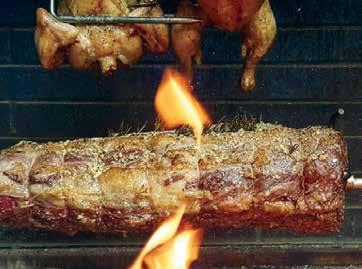

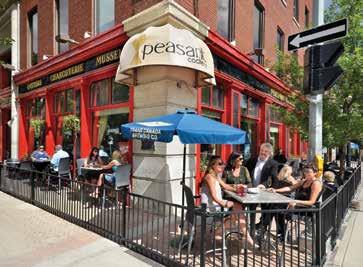
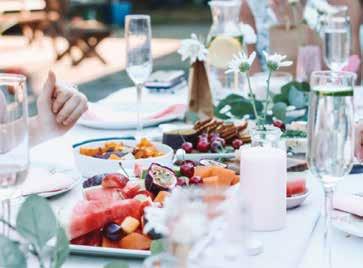

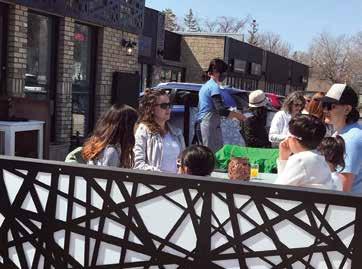 Prairie’s Edge
Alena Rustic Kitchen
Peasant Cookery
529 Wellington
WOW Catering
Bluestone Cottage Bakery & Café
Prairie’s Edge
Alena Rustic Kitchen
Peasant Cookery
529 Wellington
WOW Catering
Bluestone Cottage Bakery & Café
Twenty years ago, a customer came into the store and said to me: “I had this wine that had an S on the label, and I loved it.” My first question was: “OK, was it white or red?” And they didn’t remember! “Do you remember what section of the store it was in?” Nope. Miraculously, I found the wine—and filed that whole experience under “classic wine questions.”
Things have come a long way in the intervening 20 years. First came the Internet, where you could Ask Jeeves, “Is there a wine label with an S on it?” Next came the ability to carry the Internet in your pocket. The miniature smartphone camera then allowed you to take a picture of that “amazing wine with an S on the label” to show to your favourite wine purveyor, giving us a bit more to go on.
Technology has transformed how we receive and remember information (do we still need to remember?). Customers can now use any number of apps to take a picture and read tasting profiles. Scores come up automatically, and we are one click away from a purchase.
Luckily for our industry, you’ll never be able to drink AI wine. However, technology has transformed our industry by offering wine lovers a global wine community online. There is a niche group for any wine conversation you want to have. You no longer have to wait for new and interesting wines to filter their way through the knowledge-holders in the wine world to discover them. This has also made us rethink how we can offer our wine knowledge to our customers. Instead of sitting back and waiting for people to come to us, we have explored new platforms to help us maintain and nurture our connections with our customers.
Wine is inherently communal. When we share a bottle with friends, family, and colleagues, we are strengthening the social ties that bind relationships together. Like art, music, theatre, and food, wines connect people to the artisans who have created them. Sommeliers and Wine Experts can connect our patrons to the stories that the people behind the wines—and the wine in the glass—want to tell. We do this through visiting winemakers, wine education that brings together like-minded people to learn and talk about wine, and even wine tastings at our store to connect you to new products and people you may not be familiar with. As interactions become increasingly digital and disconnected from people, we strive to keep those connections very personal.
We have also tried to keep our digital evolution thoughtful and practical, with that focus staying on connection. Recognizing that the last app we want to use on our phone is, well, the phone, we have a Text a Sommelier program to get quick answers when you need them. We populate our online wine store not just with inventory and easy search options, but also with tasting notes from the Sommeliers at JoCo you have grown to know and trust. We also offer the stories of the people behind the wines with producer profiles. It is a glimpse into the ethos of the wineries we work with and is designed to help you engage with our experts (either in person or online) and, through them, a global community made up of real people, real wines, and real passion.
Text A Sommelier (204.400.0499): Text your questions to our Sommeliers between 9 am and 9 pm—and a live human wine expert will answer your questions about food and wine pairing, how to navigate wine lists—or even settle a burning question that comes up over spirited conversation—in real time.
Instagram @joneswinemerchants: Our social media features new arrivals, event announcements, staff picks and tasting notes, recipes with wine pairings, and Reels that detail the daily goings-on in the store.
Delivery: We deliver 7 days a week and cover every part of the city, extending to Headingley and East and West St. Paul.
JonesWines.com: We also realize that customers still want an easy and fast way to shop for their goto wines online. We have optimized some features on JoCo Online, like your Favourites being one click away with the icon. We have also launched our rewards program (see page 49 for details), so earning points online is as easy as shop, click, buy
We are moving to a Quick Link Widget! Why?
• All of the same features with a faster user experience
• Real-time inventory with live updates
• More secure and no data harvesting from third-party companies
• Works on both Apple and Android platforms
Show us in-store that you have added our new Widget to your home screen, and we’ll add 500 bonus points to your Jones & Co. Rewards account!
For instructions on how to install our Quick Link Widget, simply scan the QR codes above.
* As of July 1, 2024, the iPhone app will no longer be updated.
Now selling in Sage Creek, discover our brand-new 2 & 3-bedroom condos, each featuring designer finishes and underground parking. Located in the vibrant heart of Village Centre.
Visit us online to learn more:

 For iPhone*
For Android
For iPhone*
For Android
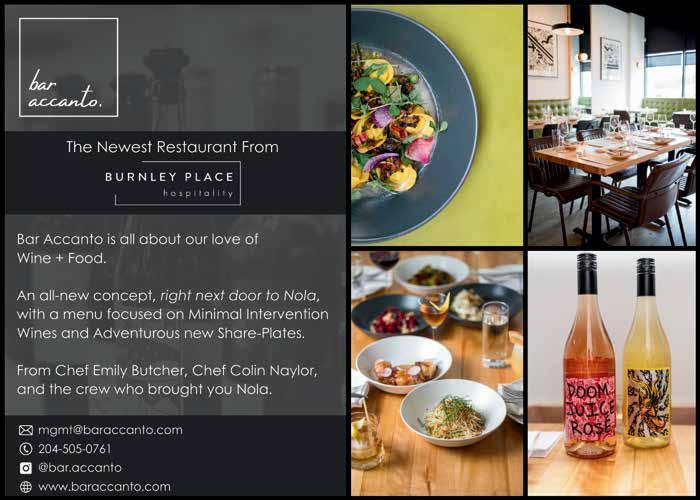








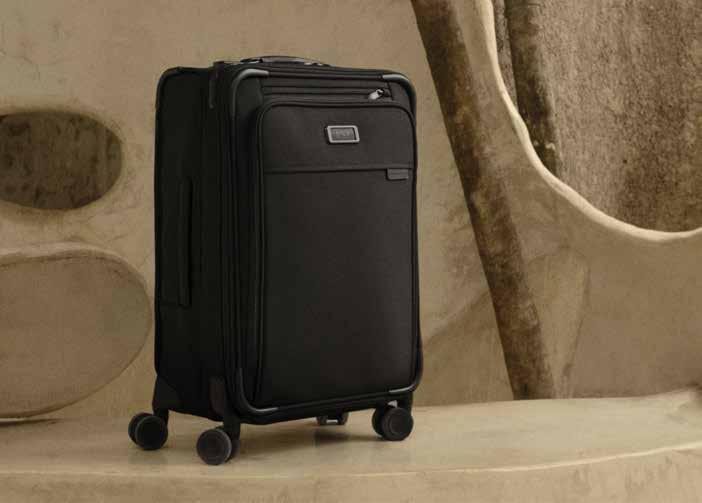
Chef Östen Rice’s career reflects the culinary history of Winnipeg. After standard budding chef experiences in local family-run Mediterranean and Italian restaurants, Östen spent time in some of Winnipeg’s most revered restaurants, from classics like Dubrovnik’s and Amici to the cutting-edge Gluttons. Östen’s reputation for hard work and creativity—and his endless curiosity—have led to a wide range of opportunities, including Sous Chef at a luxury resort in Nova Scotia, a truly unique approach to Japanese cuisine at Wasabi Sabi, and consulting projects like Nuburger.
With projects starting and stopping due to COVID, Östen took WOW! Hospitality’s Doug Stephen up on an offer to go for coffee, and Doug introduced a unique opportunity for a steakhouse on Portage and Main. The two became excited about the fusion of their two passions—steak and Japanese cooking—and the idea of 529 Uptown took flight. With the launch of the restaurant, along with 529 Burger, 529 Coffee, and catering, Östen is making his mark with yet another quintessential Winnipeg hospitality juggernaut, pushing himself and his team to offer a unique approach to new cuisine.
Your vision/philosophy for 529 Uptown: 529 Uptown is a modern take on the Japanese steakhouse where we are emphasizing really high-quality steak, fresh seafood, an incredible wine list, and both classic and innovative cocktails. We are offering something that suits the demographic—downtown and at 201 Portage. We have young business people coming down who want a quick bite and a cocktail while they work on a project, and we have established powerbrokers in the city coming in for lunch meetings.
The secret ingredient in your pantry: Indonesian long pepper. It’s really complex—not quite as spicy as a black peppercorn, but it has a lot of other interesting spice notes. For our Wagyu carpaccio, I rub the pepper on the outside to form a little bit of a crust and then drizzle pepper-infused oil to finish it.
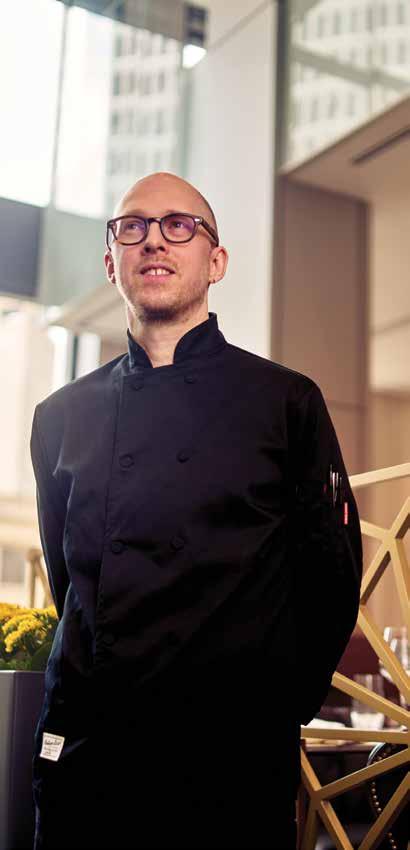
Your most popular dish: Everyone loves our Wagyu beef. It is sold by the ounce and served on a small grill over Japanese charcoal to keep it warm.
Favourite kitchen gadget:
I love the immersion circulator (aka, sous-vide). We make a marinated Wagyu beef brisket that cooks for 70 hours. I have to come back to the kitchen at all hours to tend to it over that time.
Favourite wine:
Demuerte 2019 Deluxe Red Blend (Yecla, Spain).
Favourite cookbook:
I always find myself referring back to Charlie Trotter’s series of books from the late 90s. It was really inspiring for me to see cooking that was so refined, imaginative, and meticulous yet relaxed and unconstrained in its presentation.
The first meal that made a real impression: There was a moment when I was 10 years old, and I was visiting family in Sweden. My uncle would fish and then prepare the fish in a little smokehouse. We went there to see him and had lunch in the grass, and I just remember sitting and having fish. I had never tasted something that good.
Dream food travel destination:
Travelling through Spain, exploring different regions and styles of cooking.
A concept you would love to see in Winnipeg: A yaki bar, serving a variety of bites freshly grilled over charcoal (with tasty cocktails).
Trapped on a desert island, the five ingredients you want with you:
Yuzu juice, Indonesian long pepper, sea urchin, a good steak, and coffee beans.
If you could cook for anyone: I would cook for my grandfather on my mom’s side. He lived in Sweden and was an artist: a photographer, painter, goldsmith, and knife maker. But he never really got to see me become a chef and see what I’m all about. I would love to have shown him that.
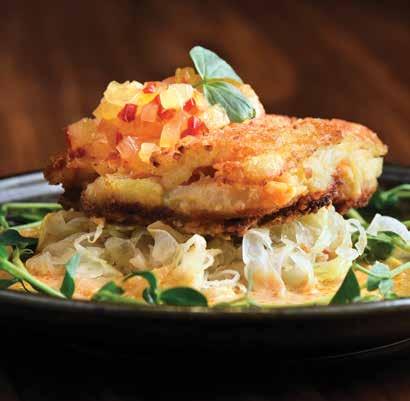



Wedding season is here and with it, marriage.
As you embark on this exciting journey together, it’s time to consider the impact that such a major life event will have on your savings, investments, tax filing status, and estate planning. Marriage can also affect certain government benefits and programs. Overall, this time brings both financial advantages and responsibilities for Canadians. Rawluk & Robert CPAs can help you navigate these changes effectively and make informed financial decisions for your future.
Phone: 204-237-6053
e-mail: admin@accountants.mb.ca
www.accountants.mb.ca




There are as many different versions of wine enthusiasts as there are grape varieties. Most people enjoy a glass of wine on the weekends, a great pairing with dinner, and maybe travel to one or two bucket list wine regions
to see where their favourite wines come from. If you’re like me and have crossed the threshold from casual wine lover to someone who likes to research a bottle, it might be time to consider building a collection.
You might disagree, thinking you don’t have the space, an unlimited budget, or the education to start a collection. However, you don’t need all those things! Most people—including me—only have a case or two of selected wines they covet and collect for various reasons. I propose that anyone can be a wine collector—and that collecting wine is just another way of organizing and sharing treasured memories and experiences.
Where to start? Wine collecting should not be taken too seriously (if you’re doing it for the love of wine). Start
by collecting wines organically and enjoy the journey. I found some of my most exciting bottles while travelling or to commemorate a special occasion. If you slowly buy wines here and there along your wine path, you will eventually notice that the wines you choose will change as your palate evolves: your collection will tell the story of your personal journey.
What wines should you put aside to age? Only a few wines benefit from aging. Most are meant to be consumed within a few years of bottling.
Fruit flavours and secondary aromas need to be upfront and persistent. If a wine doesn’t have these characteristics, after aging, all you will be left with is tannin and acid.
Medium to high acidity balances both tannins and fruit. For white wines, it is the backbone that allows it to live a long time.
Moderate to high tannins (that produce that mouth-drying sensation) help preserve red wines for many years and will change and evolve throughout the aging process.
The hardest to achieve: if any of the other three elements is too prominent, a wine may not stand the test of time. The best winemakers always strive for balance.
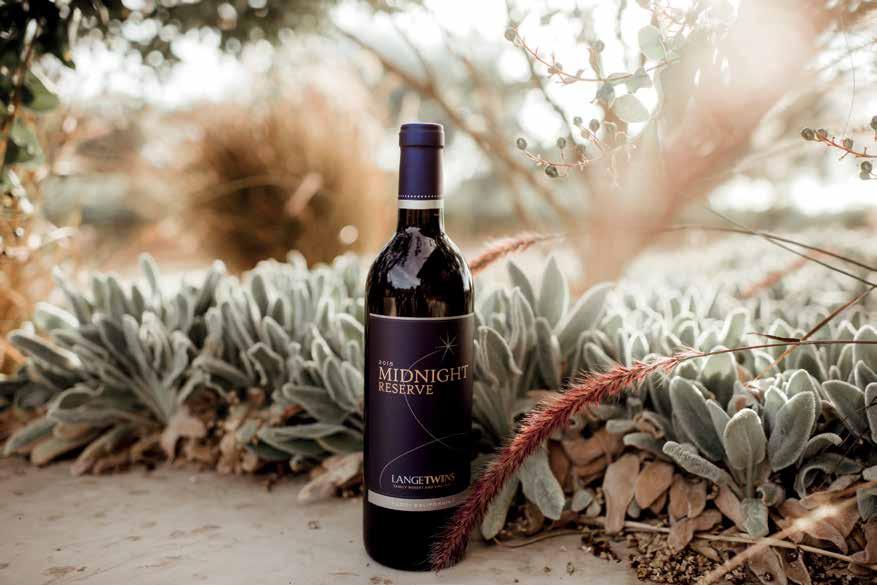
There are classic grapes and regions that do extraordinarily well with cellar age, whether you prefer white, red, bubbles, fortified wines—or a little bit of everything!
TIP: In addition to the above guidelines, do a little bit of on-the-spot research while you shop. Looking into a certain vintage or expert review not only helps you make great choices, it also adds to the fun of learning about the wine itself.
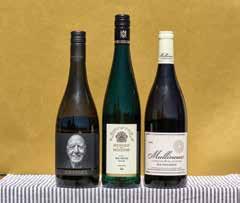

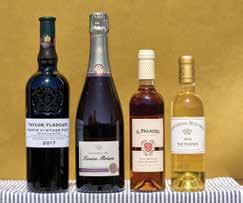
How much should you spend? If you want a bottle that has future potential, you will have to spend a little bit. Production for age-worthy wines comes with extra costs—handpicking and hand sorting grapes, quality (new) oak barrels, and a more hands-on process all make for a higher bottle cost. Luckily, there are many wines in the $30–$45 range that are of great quality and will have the characteristics you are looking for. Don’t blow your budget all at once—if you keep building through the years, your collection will tell a much more interesting story.
White: Premium examples of German Riesling, Australian Sémillon (Hunter Valley), South African Chenin Blanc, White Burgundy (Chardonnay) or California Chardonnay.
• Briar Ridge 2023 Stockhausen Semillon Hunter Valley, Australia ($32.99)
• Reichsgraf von Kesselstatt 2020 Wiltinger Trocken Riesling Mosel, Germany ($36.99)
• Mullineux 2019 Old Vines White Swartland, South Africa ($54.99)
Red: California Cabernet Sauvignon and blends, Bordeaux, or Barolo/Barbaresco (styles of Nebbiolo) (Italy), red Burgundy/Pinot Noir (France), Brunello di Montalcino or another Tuscan Sangiovese (Italy), Rioja or Ribera del Duero Tempranillo (Spain).
• Monteraponi 2021 Chianti Classico, Italy ($51.99)
• Lange Twins 2016 Midnight Reserve Lodi, California ($39.99)
• Le Ginestre 2017 Barolo Riserva Piedmont, Italy ($122.99)
Others: Vintage Champagne (France) or dessert wines, such as Vintage Port (Portugal), Sauternes (France), and Vin Santo (Italy)
• Taylor Fladgate 2017 Vintage Port, Portugal ($162.99)
• Louise Brison 2015 Brut Champagne France ($81.99)
• Il Palazzo 2016 Vin Santo del Chianti, Italy (375 ml/$39.99)
• Chateau Rieussec 2018 Carmes de Rieussec Sauternes, France (375 ml/$35.99)
How should you store wines? Storage is one of the most important aspects of aging wine. The key rules are:
STORE IN A DARK AREA
CONSISTENT TEMPERATURE:
12°C TO 15°C (53°F TO 59°F)
BOTTLES WITH CORKS STORED ON THEIR SIDES
AWAY FROM VIBRATIONS
Investing in a small wine fridge might be ideal if you lack space. Another cost-effective way of storing wine is by using wooden crates and keeping them on racks in areas such as a corner of your basement or closet (as long as they align with the rules above).
When should you open a bottle? As you start putting wines away, take a bit of time to organize or catalogue them in a way that will remind you to open bottles. People with larger cellars can forget about the wines they have stashed away. If they miss the optimum
window, the fruit flavours can fade, causing wines to become “tired”—a term used to describe a wine that has aged beyond enjoyment. Sure, some people collect wine as a status symbol just to look at and show off, but we have to emphasize that the real enjoyment of a great collection of wine is eventually drinking it. A great way to manage when to open a wine is to choose a reason to open the bottle, such as birthdays, accomplishments, or visits from friends. And remember, sometimes, instead of waiting for an occasion to open wine, opening a beautiful wine can create its own special occasion!
DON’T FORGET TO OPEN YOUR WINE!
• Use your calendar—wouldn’t you rather get an alert to open wine than a reminder about another meeting?
• A spreadsheet can help you track and organize your wine by your chosen categories.
• Apps such as CellarTracker or InVintory are useful for the technologically astute.
• If you are a visual person, you can tag your bottles with all the pertinent information and organize your fridge or rack chronologically from “Drink First” to “Drink Last.”
If you are considering starting a wine collection, I advise you to heed the proverb: “The best time to plant a tree was 10 years ago. The next best time is now.” Start your collection now to enjoy it for years to come.
Start collecting with our Cellar Starter Program!
If you want to invest in your collection and know you are getting great value for the price, consider joining our Cellar Starter Program. It takes the guesswork out of cellaring wines. Every three months, Sommelier Gary Hewitt carefully chooses the Cellar Starter wines and writes meticulous tasting and cellaring notes. We have two different sizes of subscriptions available: 6-bottle boxes (a value ranging from $240–325 + taxes) and 12-bottle boxes (a value ranging from $480–$650 + taxes).
The current Cellar Starter kit features this collection:
• Drink now to 2030: Pirathon 2018 Blue Shiraz Barossa Valley, Australia ($38.99)
• Drink now to 2031: La Junta 2021 Gran Reserva Carménère, Chile ($41.99)
• Drink now to 2029: Pegaso 2021 Zeta Vino de Garnacha Sierra de Gredos Cebreros Sierra de Gredos, Spain ($44.99)
• Drink now to 2030: Château Saint-Pierre de Corbian 2017 Saint-Estèphe, France ($54.99)
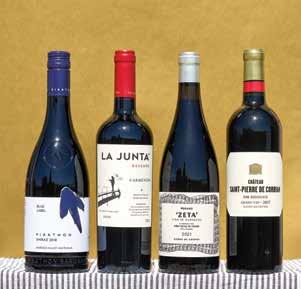
THURSDAY, SEPTEMBER 19TH
BONUS points for Rewards Members each month!


Sign up NOW in-store or online!

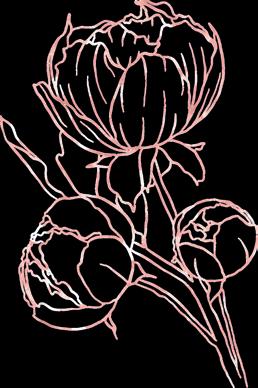


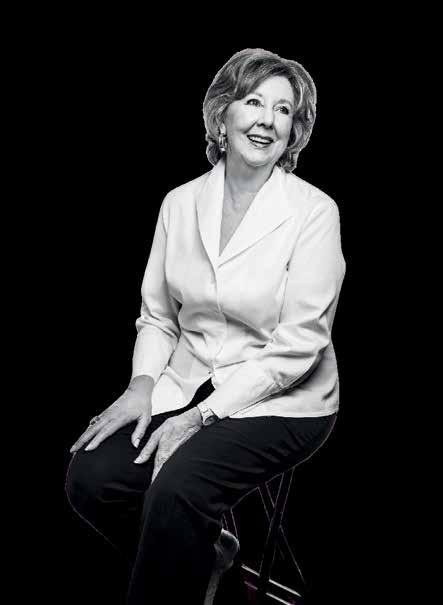


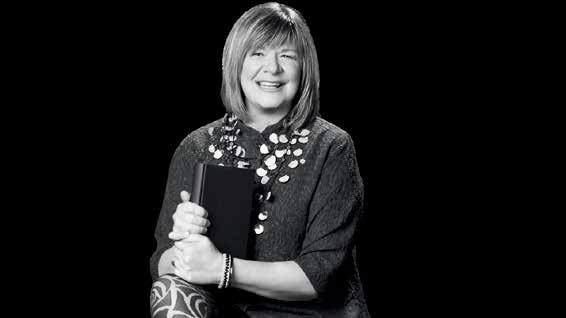
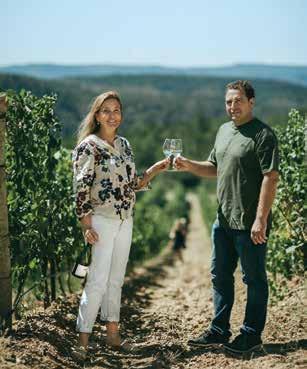
Interview by Gary Hewitt, DipWSET, CWE FWS, Sommelier
Laurent Miquel has supplied wines to Jones & Company for almost 25 years. Their inception and growth have paralleled ours. In 1996, Laurent Miquel was working as an engineer in the auto industry in Newcastle, England, when he got a call from his father: “Either you come back to the family vineyard, or we’re going to have to sell out. I really need some help here.” Laurent moved back to his family’s winery, Château Cazal Viel, in the Languedoc, France. His parents couldn’t afford to pay him a salary, so he started making his own wine. In 2001, his Irish partner, Neasa, joined him at the estate, and they worked together to develop the Laurent Miquel label: a brand that is internationally known for both quaffability and quality. We recently chatted with Neasa about the past, present, and future of their winery.
1
How did the philosophy behind the Laurent Miquel brand develop?
The roots of Laurent’s motivation took hold in 1998. Laurent had travelled to Bordeaux to work with Michel Rolland in the vineyards of a friend’s father, who had bought some very expensive, very high-profile vineyards in Saint-Emilion. Over breakfast, Laurent said to this guy (who had a lot of money and knew a lot about wine), “Why don’t you come to the Languedoc? We need people like you to invest in and reinvigorate the region. It’s a really exciting place to grow wine.” The man turned around to Laurent and said, “I will never make one drop of wine in the Languedoc because you will never make wine with finesse.”
 Neasa and Laurent in the family vineyard (photo courtesy of Laurent Miquel)
Neasa and Laurent in the family vineyard (photo courtesy of Laurent Miquel)
Well, if you want Laurent to do something, you tell him it can’t be done. That is the secret. And literally, every choice made since then has been to prove this wine snob wrong, from the choice of where to grow and the choice of grape variety to the focus on research, new techniques, and the orientation of vine planting. We were about really questioning the status quo and making small changes along the way to ensure that we would make wines with finesse.
In 2001, when I joined Laurent at the vineyard, we concentrated on Laurent’s signature and started to build a name around what his winemaking meant. A lot of flying winemakers came to work with us, especially from the United Kingdom, Argentina, and New Zealand. Because of Laurent’s background in engineering, he was very open to new technology and innovation. Everything we have done over the years has been driven by trying to create wines that have balance and natural acidity and are harvested at just the right time so that you keep that crunchy, gorgeous freshness that you get on the grape, on the vine, in the final product.
It’s also been really important to have Laurent’s father around. Laurent has the vision, but his dad has the knowledge, the common sense, and the experience to make it work. He knows the intangible ways of doing things to break through the bureaucracy. It’s a tricky business. There’s a funny way of thinking around here, and you have to admire the pluckiness of the French sometimes, but also, God, it can be damn complicated, especially if you’re not from here.
2 Where are Laurent Miquel wines seeing the most growth?
White wine now makes up 60% of our total production. That is not very typical of Languedoc, but it has been driven by demand, as well as our work with Viognier and then later, Albariño and other aromatic whites. It was a real leap of faith bringing Albariño to France and planting it in a hillside site in Corbières, which is an appellation that was known only for red wines. We planted Chardonnay initially because we couldn’t get any more Albariño, but it’s turned out to be an amazing fit for a particular part of the vineyards. Laurent has created an amazing place to grow Chardonnay that can be aged in wood really, really successfully.
3 Can you explain the interesting Irish connections in your wine names?
We Irish people have always managed to wriggle our way into the wine industry, especially in France. If you go to the Cité du Vin in Bordeaux, there’s a film and a whole piece on Irish wine brokers. They were all Irish lords who were kicked out by the English and came to France. So,
I’m a modern member of the Wine Geese [Ed. note: Irish migrants and exiles who established vineyards overseas— especially in France, but also as far away as Australia— in the late 1600s were called wine geese]. We’ve tried to give the wines a name that looks good and sounds good but also says something about the family and our history together. For example, solas is the Irish word for “light,” and in Old French, it means good times or party. It’s also a reference to the style of Laurent’s wine—Solas Viognier is very light, very elegant, has no oak, is very lifted and very bright. So the name means something to me, but it also says something about the wine.
4 Your portfolio spans a large range of wines, from quaffable to distinct wines that speak of where they’re from. What drives that diversity?
Languedoc is the only area in France where you can get these amazing values, and that has been important for what we call “the grand export”—countries outside of Europe where we’ve done quite well. We export 90% of what we do—we sell our wines in Brazil, Haiti, Canada, Japan—all over. We have wines at different price points, which allows people to get to know what we have to offer from the area and builds confidence in the brand.
5 What do you see for the future of Laurent Miquel?
In the shorter term, Laurent has done quite a bit of work on his red wines to bring them in line with the whites. He changed his winemaking style in 2018, so those wines are starting to filter through. We’ve started selling a lot of wines like Pinot Noir and some lighter-style Languedocs. We’ve planted a lot of Cinsault and that helps with the rosé but also the red wines. We are introducing Cinsault into our red blends to bring freshness, lift, and brightness so that people can find in the reds what they love in the white wines. So that’s something that is starting to filter through now.
People are much more interested now than they were 15 years ago as to what we do in the vineyard. So, with our packaging and our communication, we’re hoping to push that a little further and tell people more about how we farm and why we do what we do—like harvesting water, more sustainable packaging, all of these things. We’re offering something really different, but we have to get out there and explain it to people. Laurent believes that if the Languedoc is to survive, we have to speak about this a bit more and maybe bring some other people on board. It’s so important for this area. Not much else will grow here: if they don’t have wine, they don’t know what else to do.
Ian McCausland has been our photographer since day one. He prefers to stay behind the lens, but his talent deserves a spotlight.
Ian shot our first The Cellar Door cover in 2008 and gently guided us through our first few wine and food photoshoots, generous with his 30+ years of experience, helping us shape the vision for the magazine. He has caught the laughter, focus, camaraderie, and joy of our industry over the past 15 years, skillfully drawing out his subjects and creating an environment of laughter and ease at every shoot.
Cheers to you, Ian!
From:
talk@ian.ca | Ian.ca | @ianmcc
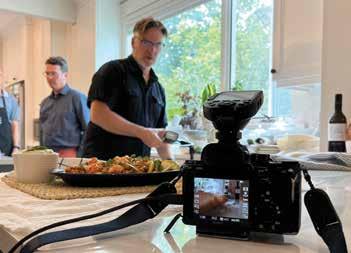
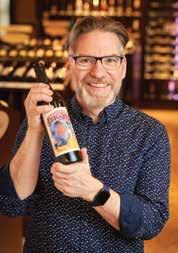
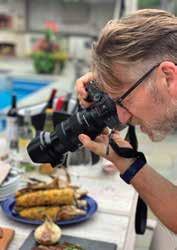
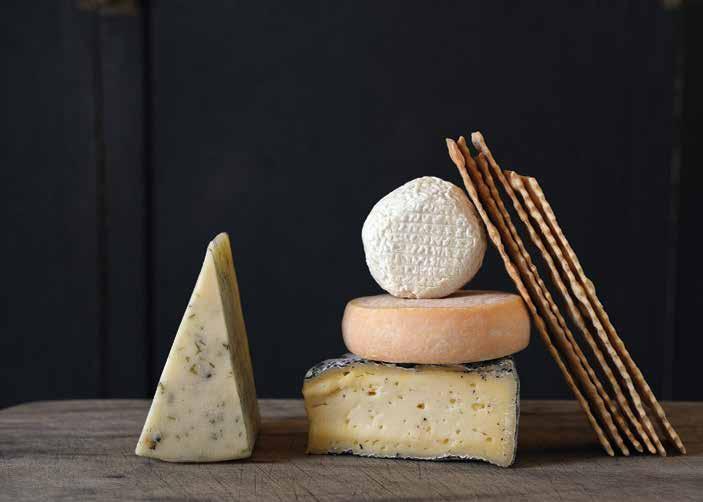
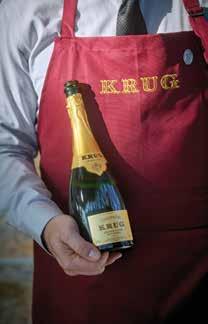
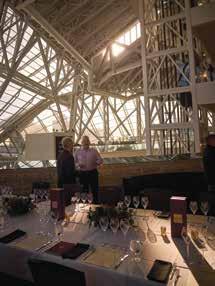

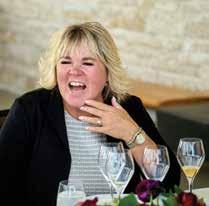
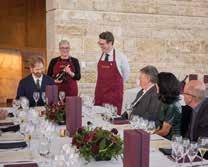
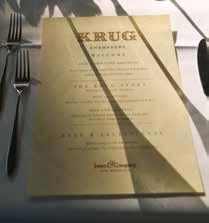

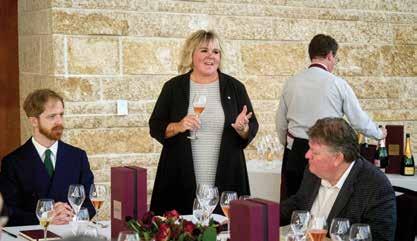
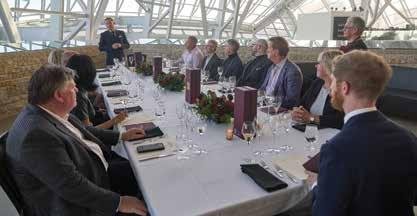
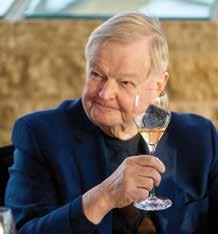
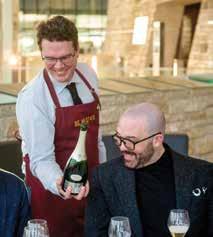
This year, Jones & Company Wine Merchants received our third allocation of one of the world’s rarest Champagnes: KRUG Clos de Mesnil Blanc de Blancs. To celebrate the occasion, Tina and Mike Jones hosted KRUG lovers and brand ambassador Ruaraidh MacIntyre at a once-in-a-lifetime tasting event at the Canadian Museum for Human Rights.

With Paul and Shirley Martens, Jill Kwiatkoski, and Rick Watkins
Photos by Ian McCausland
Braai. Asado. Barbie. Call it what you will—a barbeque by any other name tastes as sweet! The ritual of outdoor cooking has a place in every culture—including in some of our favourite wine regions. When pondering a global BBQ shoot, the first people we thought of were our friends Paul and Shirley Martens—who consider South Africa their second home. They import many of the South African wines you love in the store. They enthusiastically agreed to host a day of grilling at their Manitoba property, excited to share the ritual of the South African braai. Our resident BBQ expert, Rick, took up the mantle of grilling beef and making a delicious chimichurri to celebrate the Argentine asado, and Jill collaborated with Chef Louis Ritchie, who runs the restaurant at Pikes Winery in Australia, to develop a recipe worthy of an Aussie barbie. The experience was everything a barbeque should be—Paul and Shirley opened their home to us to share wine, recipes, food, and laughter. Happy grilling!
Serves 6–10
6 ciabatta rolls, cut lengthwise (not too thick)
6 tbsp butter, softened
2 tomatoes, thinly sliced
1 onion, thinly sliced
Pinch salt and pepper to season
1 coil of Boerewors
Equipment:
Grill basket
Firepit and wood, charcoal grill, or a propane BBQ
The heat source of a braai can be a wood fire or charcoal briquettes. You can also use a propane/gas grill if that’s what you have—the important element of the braai is the camaraderie that takes place over a slowly paced backyard meal.
Braaibroodjies (pronounced Bri-BROO-jees): Spread both sides of the cut ciabatta rolls liberally with butter. Add tomato slices, onion, salt, and pepper. Top with the other half of the buttered bread. Place the Braaibroodjies in a grill basket. Braai over mild coals, regularly turning the grid until both sides of the bread are golden brown. Be mindful—it only takes two sips of wine to burn your broodjies.
Boerewors (pronounced BOO-ruh-VORS) is a South African fresh sausage that is perfect for the grill. The name comes from the Afrikaans words boer (“farmer”) and wors (“sausage”). The sausages are primarily beef but can also contain lamb or pork. The main spices are cilantro, allspice, coriander, cloves, and nutmeg. We sourced our fresh Boerewors locally through Mr. Biltong (mrbiltong.ca).
South Africans are known to braai some meat simply as an excuse to have Braaibroodjies. The traditional Braaibroodjie (basically a barbequed toastie) is perhaps the highlight of any “braaing” experience and the perfect side dish to some hearty Boerewors sausage.

Thelema 2018 Mountain Red Stellenbosch, South Africa ($25.99) Mullineux 2017 Syrah Swartland, South Africa ($61.99)
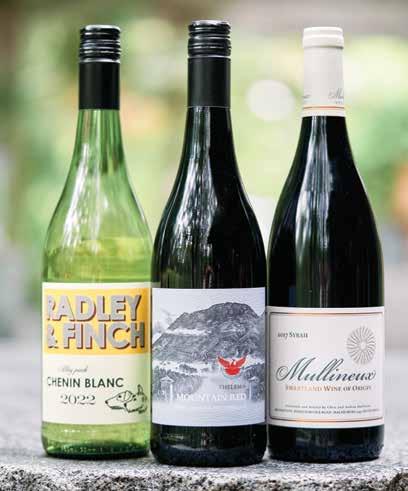 PAIR WITH:
Radley & Finch 2022 Alley Pack Chenin Blanc Western Cape, South Africa ($24.99)
PAIR WITH:
Radley & Finch 2022 Alley Pack Chenin Blanc Western Cape, South Africa ($24.99)

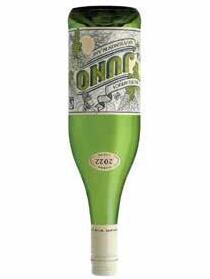
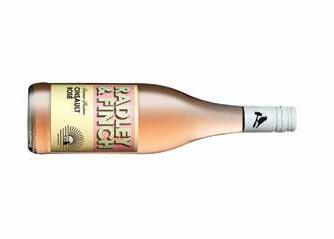
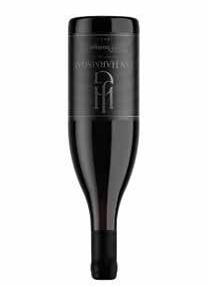
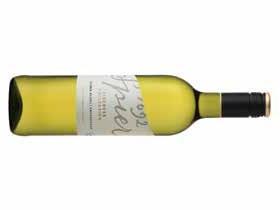
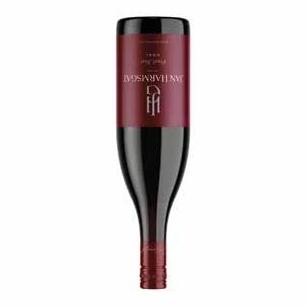

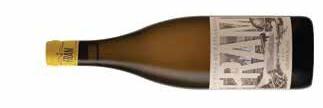
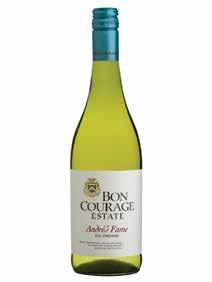



Serves 4
4 6 oz pieces of fresh cod
½ cup miso glaze*
1 can chickpeas (540 mL), rinsed and drained
2 garlic cloves, roasted
2 lemons, juiced and zested
2 tbsp extra virgin olive oil salt and pepper
2 tbsp butter
cup toasted almonds
1 clove garlic, finely minced
1 tbsp fresh dill, plus more for garnish
1 tbsp fresh parsley, plus more for garnish
*Miso Glaze
¼ cup miso paste
¼ cup sweet white wine (or white wine with extra brown sugar added)
¼ cup brown sugar
1 tsp rice vinegar
Dash fish sauce
For the miso glaze: Combine all ingredients for the miso glaze in a small sauce pot and bring to a very gentle boil for 2 minutes. Stir often. Remove from heat and let cool to room temperature. (This can be made a few days ahead and refrigerated.)
For the cod: Rinse cod and pat dry with a paper towel. In a shallow bowl, pour miso glaze over the cod so it is covered. Leave to marinate for a minimum of 20 minutes or up to 1 hour.
In a blender, add chickpeas (saving a handful for the next step), roasted garlic, the zest and juice of 1 lemon, olive oil, and a pinch of salt and pepper. Blend to a smooth, thick purée. You may need to add some water to blend it until smooth, depending on the chickpeas.
Heat butter in a pan with the almonds and reserved chickpeas. Add minced garlic, dill, parsley, and the juice of half a lemon. Heat through.
On a hot grill or flat-top (or fry pan), cook the marinated cod for 3 minutes per side.
To serve, spread a bed of whipped chickpeas on a platter, place cod on top, then spoon the almond mixture over the fish. Garnish with fresh dill, parsley, and lemon zest. Serve with lemon wedges if you desire.
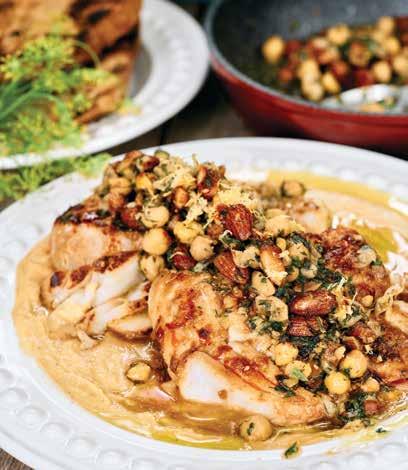
Coriole 2023 Fiano McLaren Vale, Australia ($29.99) Pikes 2022 Hills & Valleys Riesling Clare Valley, Australia ($21.99) Pikes 2020 Clare White Clare Valley, Australia ($19.99)
 PAIR WITH:
PAIR WITH:
Serves 6
1.5 kg Flanken-cut short ribs (aka, Korean-style ribs)
1.5 kg skirt steak
4 tbsp Pink Himalayan or kosher salt
For the short ribs (tira de asado): Preheat the grill to 450°F. Sprinkle liberally with pink salt on both sides, pressing into the meat. Grill for 5–10 minutes on each side until browned. Let rest, tented in foil, for 10 minutes. Dribble with chimichurri sauce, with extra in a bowl for dipping.
For the skirt steak (entraña): Preheat your grill to 500°F. Pat the steak dry with a paper towel. Season the steak evenly on both sides with kosher salt, at least 15 minutes before cooking. Grill for 3–5 minutes per side, depending on the thickness of the steak. Let rest, tented in foil, for 10 minutes. To serve, slice the steak against the grain. Drizzle with chimichurri sauce and serve with extra in a bowl.
Chimichurri Sauce
3 cups fresh parsley, finely chopped
5 cloves garlic, peeled and minced
2 tbsp lemon juice
1 tbsp red wine vinegar
1 tsp dry oregano
¼ tsp red pepper flakes
1 cup extra virgin olive oil
½ tsp kosher salt
Combine all ingredients and add salt and pepper to taste. Stir well. Cover with plastic wrap and refrigerate for at least 2 hours or overnight. Refrigerate for up to 4 days.
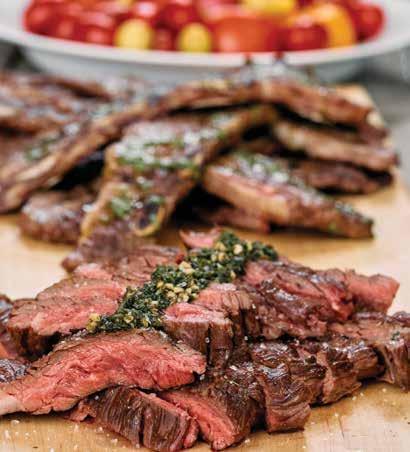
Argentine asados are social events. They are about gathering your community and spending time together. They are heavy on meat—especially beef cuts like Entraña (skirt steak) and Tira de Asado (short ribs).
Seasoning and side dishes are simple, but the meats are always served with chimichurri sauce for dipping.
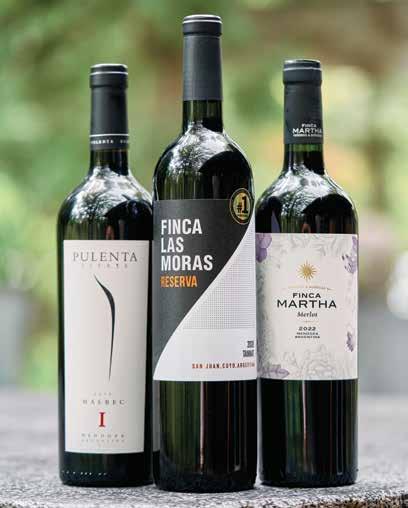
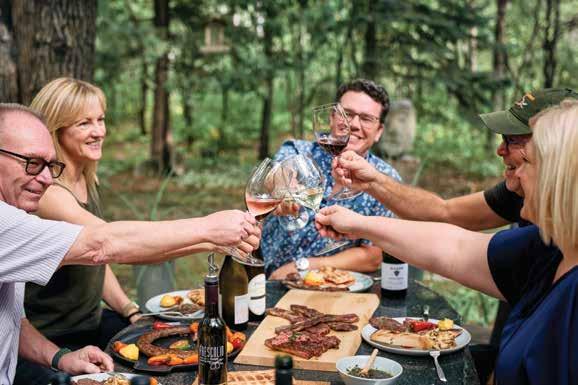
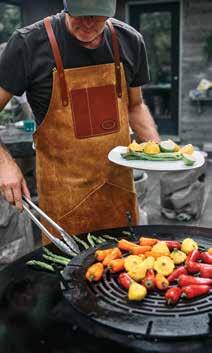


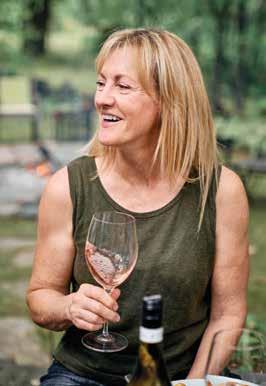
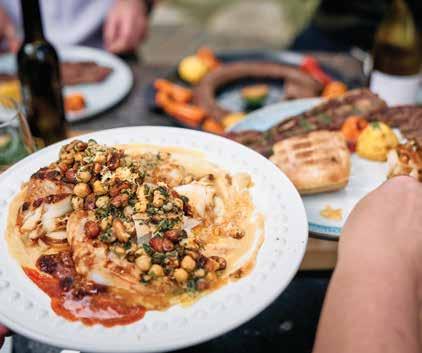


Our story
Jones & Company has opened new doors for wine and drinks education in Manitoba.
In 2002, Gary Hewitt was in the first class to complete their Sommelier studies in Manitoba and graduate from a certified Sommelier Diploma program. Gary graduated among the top 1% of all students in that program and qualified early to become an instructor in Sommelier education. In fact, since then, Gary has taught every Sommelier who has qualified in Manitoba—more than 40 Sommeliers!
Since its beginnings (first as Banville & Jones Wine Institute, now as Wine & Drinks College Manitoba), WDCM has been recognized for its full range of excellent courses in wine and drinks. Almost 2,000 registrants have taken our courses over the past 25 years. The programs have been supported by enthusiasts, as well as those seeking international recognition for their studies.
“We have top-notch instructors and programs,” says Tina Jones. “WDCM helps reinforce that the province of Manitoba is a destination for education, for the drinks industry and for hospitality.”
The internationally accredited programs of WDCM include those of the WSET, which works with 800 Approved Programme Providers in over 70 countries and in 15 languages. Online and in-person courses are available through WDCM.

WESTERN CANADA’S PREMIER WINE AND DRINKS EDUCATION FACILITY OFFERS
WINE COURSES FOR EVERYONE FROM THE HOBBYIST TO THE PROFESSIONAL.
WDCM was also instrumental in bringing the Professional Sommelier Program, the advanced certification through the Canadian Association of Professional Sommeliers (CAPS/ACSP) and the Association de la Sommellerie Internationale (ASI), to Manitoba. The first CAPS/ACSP class graduated in 2013.
WDCM continues this fine tradition of quality wine and drinks education with opportunities for wine enthusiasts, custom educational events for corporate or private groups, and training in partnership with Winnipeg’s best restaurants.
Did you know?
WDCM was the first—and is still the only—educational institution in Manitoba to offer wine education certified by Employment and Social Development Canada. This means that students enrolling in WDCM’s programs through the Wine & Spirit Education Trust® (WSET) (in particular, Level 3) may claim the fees paid to the institution for the purposes of tax credits.
WDCM is an Approved Program Provider for WSET, which maintains global standards for wine and spirits education. In their home jurisdiction of the United Kingdom, WSET is recognized as an awarding educational organization by the English regulator for qualifications and exams. WDCM undertook the lengthy process of certification because Canadian regulations are similar, and the WSET courses allow students to gain or improve skills in beverage- and hospitality-related occupations.


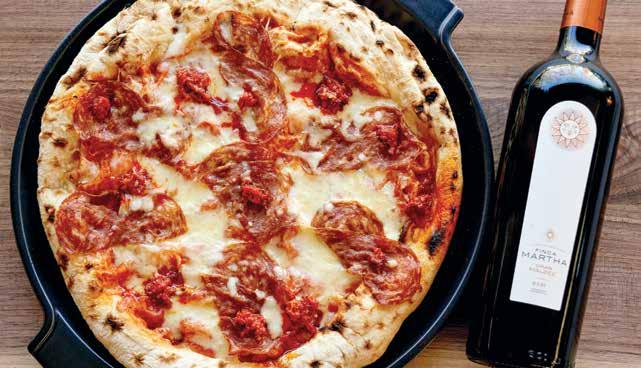
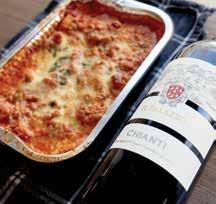
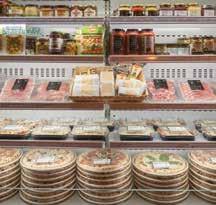





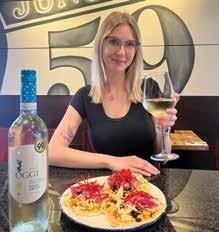
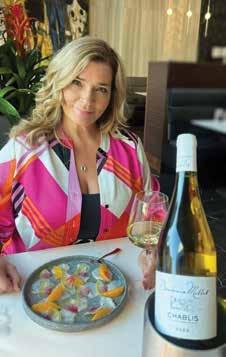
1. Bar Accanto: Casey Holder pairs her Fried Chicken with yangnyeom sauce, curtido, and pickled radish with a funky orange wine: Tawse Fermented White (Canada).
2. Lounge at Fairmont: The minerality and lime zest notes in Tawse’s Sketches Riesling (Canada) are a great match for the Tuna Poke Bowl at The Fairmont’s Lounge.
3. Junction 59 Roadhouse: Ari pairs a glass of OGGI Pinot Grigio (Italy) with the Baja Shrimp Tacos, topped with corn, black beans, feta, red chips, and chili lime aioli.
4. The Merchant Kitchen: Resident bartender Bridget Smith’s favourite pairing is Espiral Vinho Verde (Portugal) and Grilled Corn.
5. Nola: Chef Emily Butcher pairs Calzadilla Allegro Syrah (Spain) with her new menu item, Harissa Braised Beef Shank with adagio acres grits + fermented carrot sauce, marinated green tomato, grilled gai lan, feta cheese, and pickled red onion.
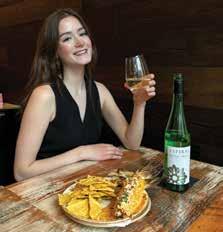

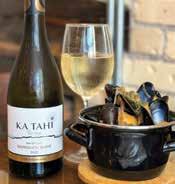
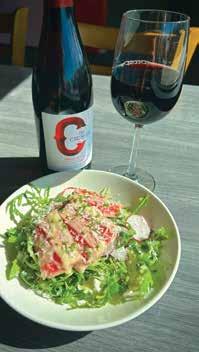
6. 529 Uptown: Michelle Field, Operations Manager at WOW! Hospitality, recommends pairing 529 Uptown’s Scallop Crudo (served with Yuzu kosho vinaigrette, watermelon radishes, and oranges) with the 2021 Baudouin Millet Chablis.
7. James Avenue Pumphouse: Sarah recommends some Precision Wine Co. Method Cab Sauvignon from the Napa Valley with the vegan Tofu Parm Sandwich, which is topped with vegan pesto, crisp arugula, gooey vegan mozza, and scratch-made marinara sauce inside a toasted ciabatta bun.
8. Amsterdam Tea Room and Bar: The perfect summer date includes Ka Tahi Sauvignon Blanc (New Zealand) and Mussels Marinière: P.E.I. mussels, white wine, garlic, onion, parsley, and cream.
9. Inferno’s Bistro: Enjoy your Sebastiani and Sons The Crusher Pinot Noir (California) with Seared Tuna with arugula, cherry tomatoes, Asiago, and roasted onion vinaigrette on Inferno’s intimate patio.
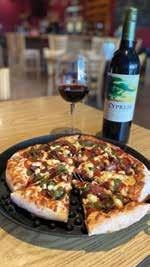
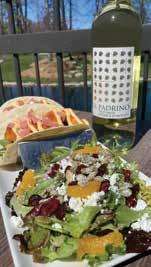
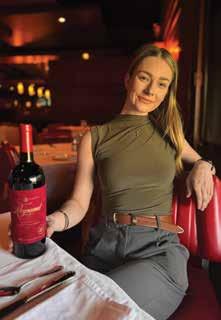
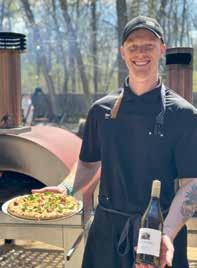


10. Diana’s Cucina & Lounge: The Michaelangelo (voted “Ireland’s Best Pizza 2007”) is topped with marinara, mozzarella, premium dry cured pepperoni, caramelized onions and goat cheese topped with Pesto. Diana paired this masterpiece with Cypress Vineyards Cabernet Sauvignon (California).
11. Prairie’s Edge: Il Padrino Pinot Grigio (Italy) has the perfect light touch to complement a light lunch of Shrimp Tacos and Summer Salad.

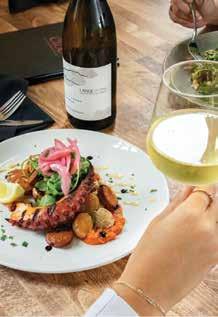


15. Rae & Jerry’s Steak House: Fawn recommends the Raymond Vineyards Cabernet Sauvignon (California) to pair with your perfectly charcoal-broiled steak.
16. Blaze Bistro at the Delta: Executive Chef Shawn Jackson and Food & Beverage Manager Sandeep Bhalla pair their Seared Chicken entrée with the Thornbury Sauvignon Blanc (New Zealand).
12. Restö at Thermëa Spa: Sous-Chef Darnell Banman pairs his wood-fired Artichoke Bacon Pizza with Canyon Oaks Cabernet Sauvignon (California).
13. Pizzeria Gusto: Simple, fresh and delicious: Rowan Joshi pairs rich, velvety notes of Brancaia Cabernet Sauvignon No. 2 (Italy) with the classic elegance of Pizzeria Gusto’s Margherita Pizza. The robust red wine enhances the fresh tomato, basil, and mozzarella toppings, creating a culinary symphony that epitomizes the essence of the season.
14. Dug & Betty’s: A perfect date night includes a “just right” serving of Lubanzi Red Blend (South Africa) paired with a Hot Turkey Sandwich and Loma Negra Pinot Grigio (Chile) paired with Pesto Chicken Alfredo.
17. Alena Rustic Kitchen: Rachel Yaffe recommends pairing Botter Bianco Nero Spumante Prosecco (Italy) with the Alena Pizza: a hand-stretched, wood-fired pizza crust topped with garlic cream sauce, prosciutto, Burrata cheese, and Arugula.
18. Cibo Waterfront Café: This ripe and tropical Chardonnay from the LangeTwins (California) pairs perfectly with Grilled Octopus served with chorizo, baby potatoes, romesco, aioli, pickled onion, and arugula.
19. Lakehouse in Clear Lake: Ventisquero Pinot Noir (Chile) is the perfect pairing for the most popular item on the menu: the Lakehouse Roasted Tomato and Goat Cheese Bruschetta with ricotta cheese, roasted tomatoes, sunflower seed pesto, and garlic oil on a delicious focaccia.

Recently, a good friend of mine celebrated a career change with a bottle of bubbles, served in heirloom family glass flutes that were originally from Norway. The blue of the stems coloured the bottom of the bowl and the bowl rims were rather thick, two features that did not exactly meet ideal tasting-glass specifications, but the power of family history and connection made that criticism irrelevant. The photo came with a request—directed at me— not to judge the choice of glasses harshly.
Do you take me for some kind of snob? I wondered. Clearly, the answer was yes. And yet, I maintain I am not a wine snob. (In my defence I would say that a long career with the Jones team requires knowing how to have fun with wine, not showing pretension about it.)
At its essence, there is precious little about wine that should be snobbish. Wine is simply a product of an agricultural season, a time-honoured, can-happenby-itself way of converting grape sugars into alcohol and deliciousness. The finished product is best enjoyed with good company.
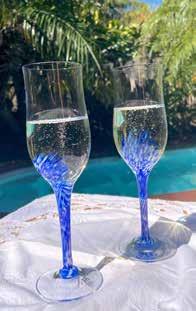
So, how has wine become so entwined with the word snob? Because the subject of wine is fertile ground. To know wine is to know a complex industry with eons of history, thousands of players around the world, scads of grape varieties, and hundreds of national and regional rule books. And then there are the bits about smelling, tasting, and describing, which can seem foreign and exotic—or alternately pretentious and affected. Wine also comes with historical class-driven, money-driven associations and customs. Some wines are for anybody; some seem to exist for a favoured few. Glassware, like wine, can be simple and inexpensive. It can also be hard to get, specialized, declared by experts to be perfect, and frightfully pricey.
Enter the snob, practicing the belief that some areas of knowledge and customs are more important than others, coupled with a claim of special access to all that and belittling those who seem lacking. Snobbery in wine works both ways: those who want to lay claim to money-taste-knowledge snobbishness can easily do so; those who want to practice the snobbery of being an anti-snob can find easy targets. The price of wines (high or low), glassware, and traditions all fall prey to this negativity.
In response to my friend’s blue-flute remark, I said that in my view, the first obligation of a wine glass is not to leak; the first obligation of a wine is to give pleasure, and it therefore looked like a good celebration to me. Sure, I have my own favourite glasses for special occasion wines, and they are closer to technically excellent than my friend’s Norwegian glasses. But mine have none of the power of a treasure brought from the old country by revered ancestors. I am also usually willing to spend more on special wines than what some of my friends are willing to spend. However, enjoying one’s own choices is a world apart from laying claim to superiority because others have made different choices. I love moments when something pleasurable (straightforward or super premium) is poured into an appropriate vessel (no leaking allowed); I sit back with my company and enjoy. Wine can do that. Whereas snobbery is all about what separates us from one another, wine can be all about bringing us together.
So let’s avoid snobbery, pick up our own favourite glasses filled with what gives us pleasure, and say to each other, here’s to you
